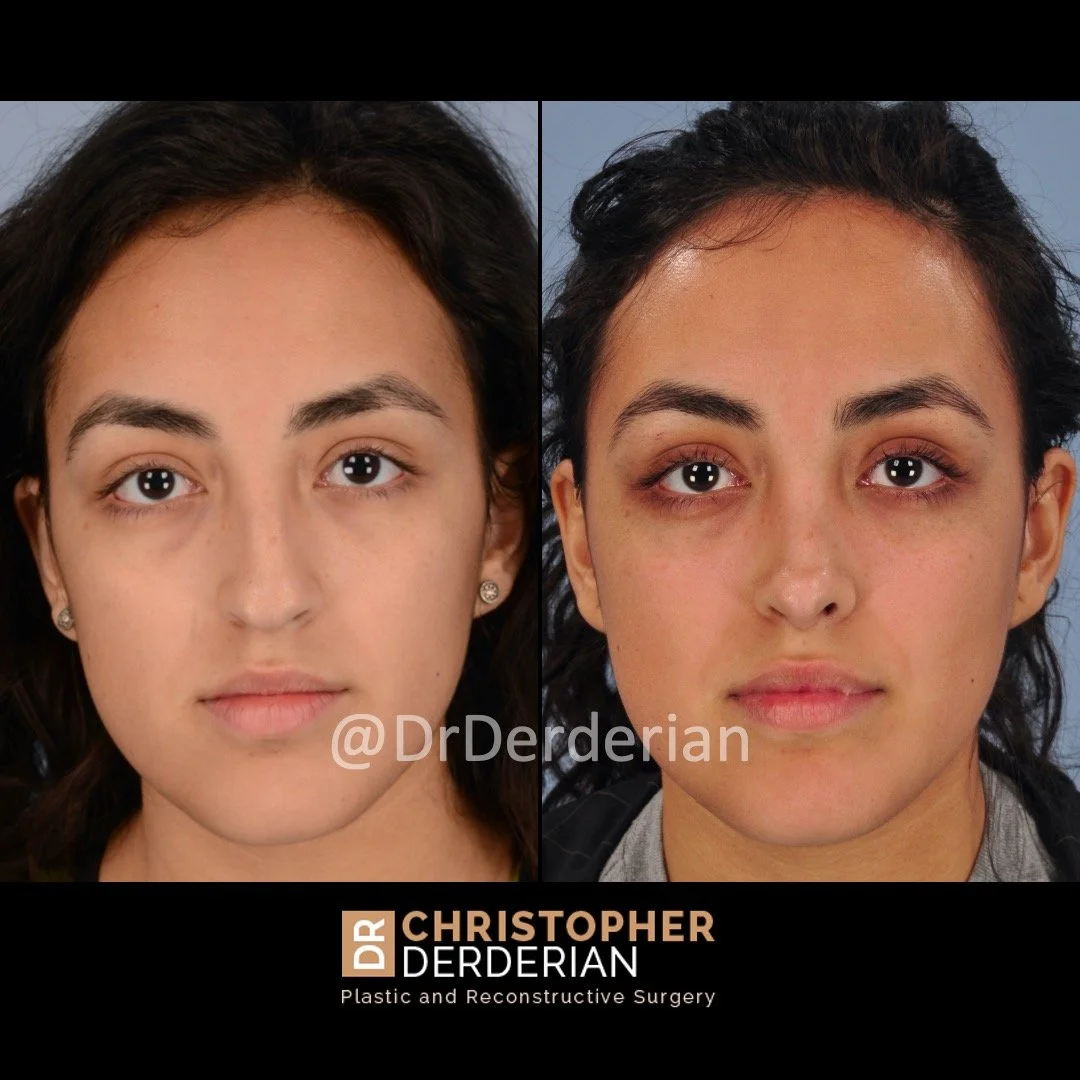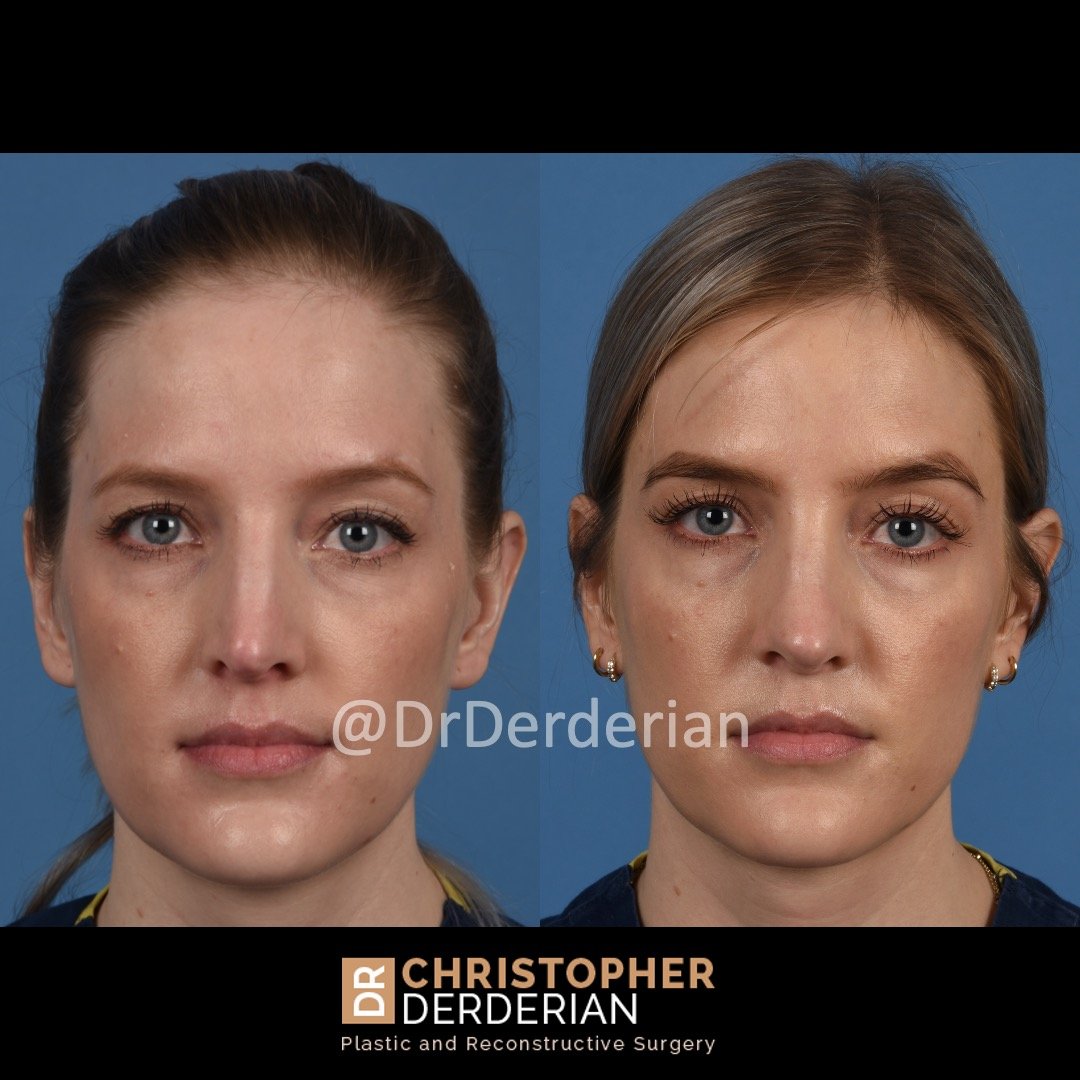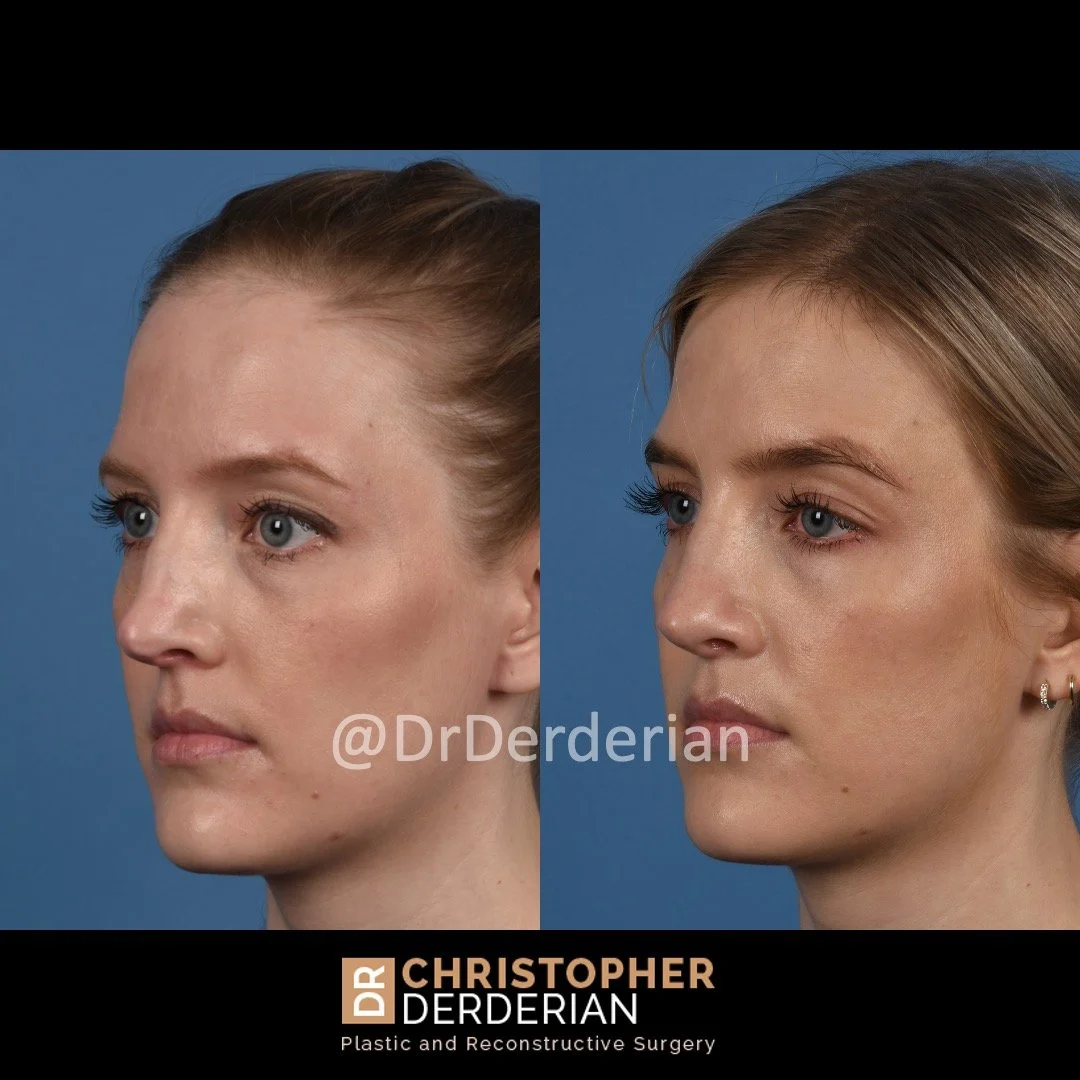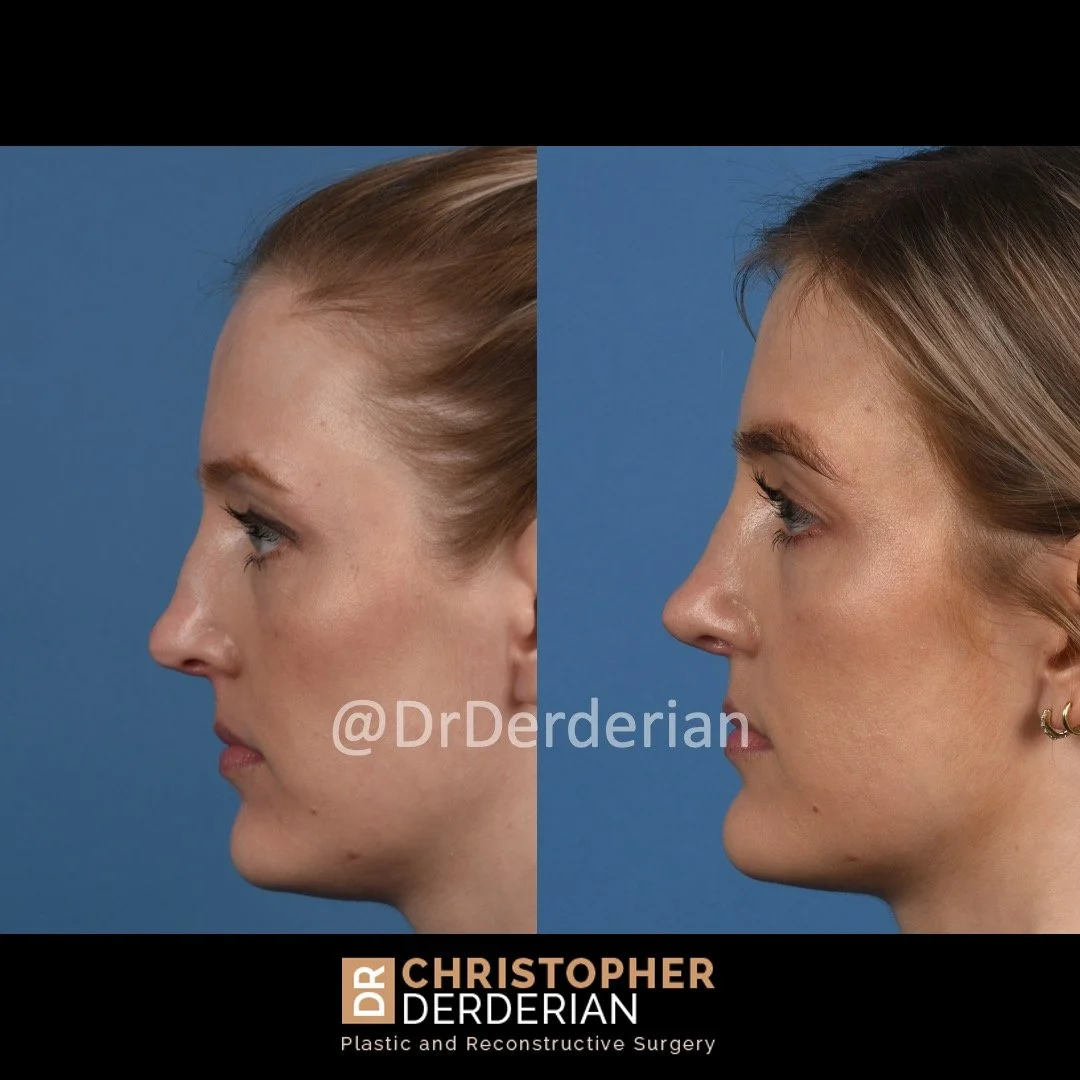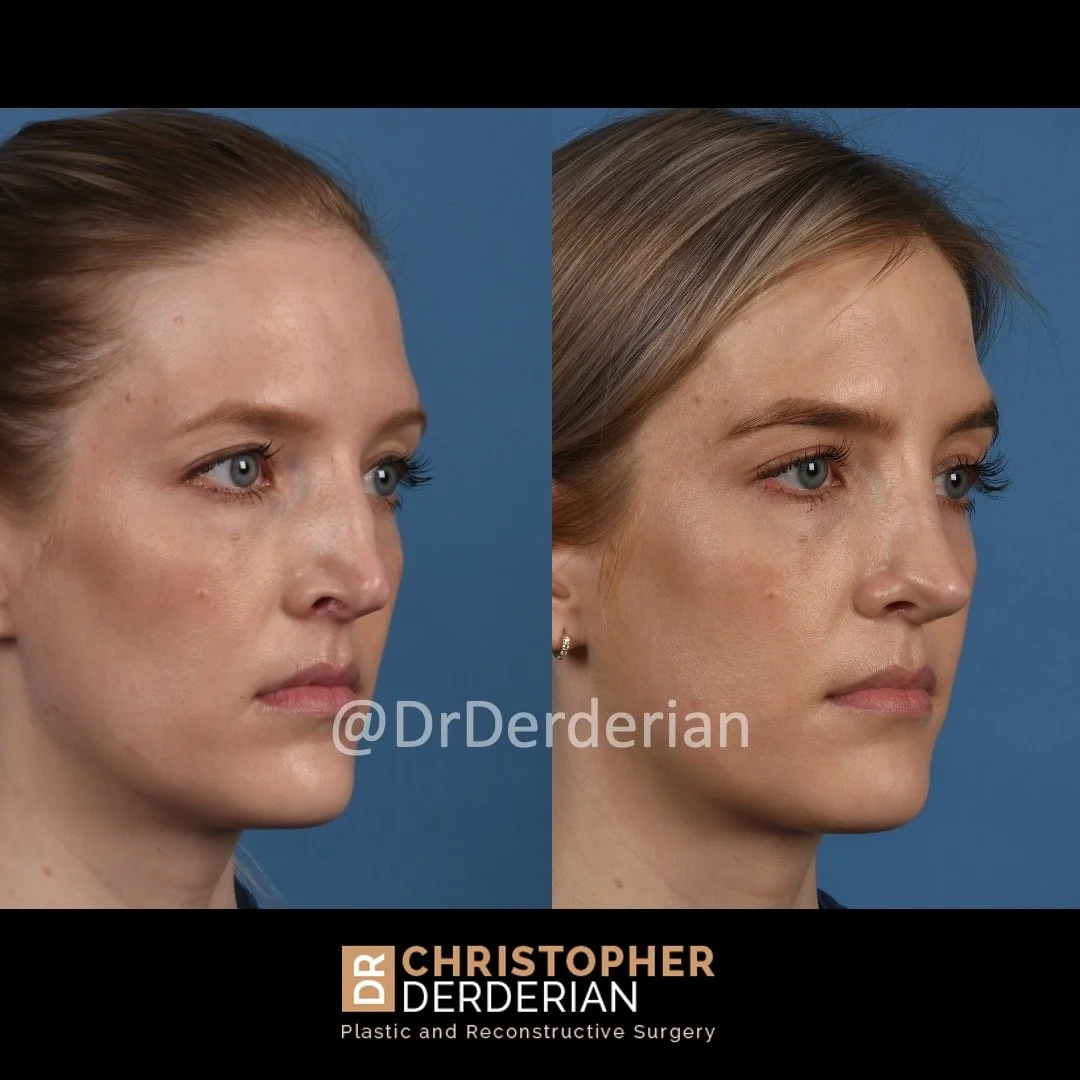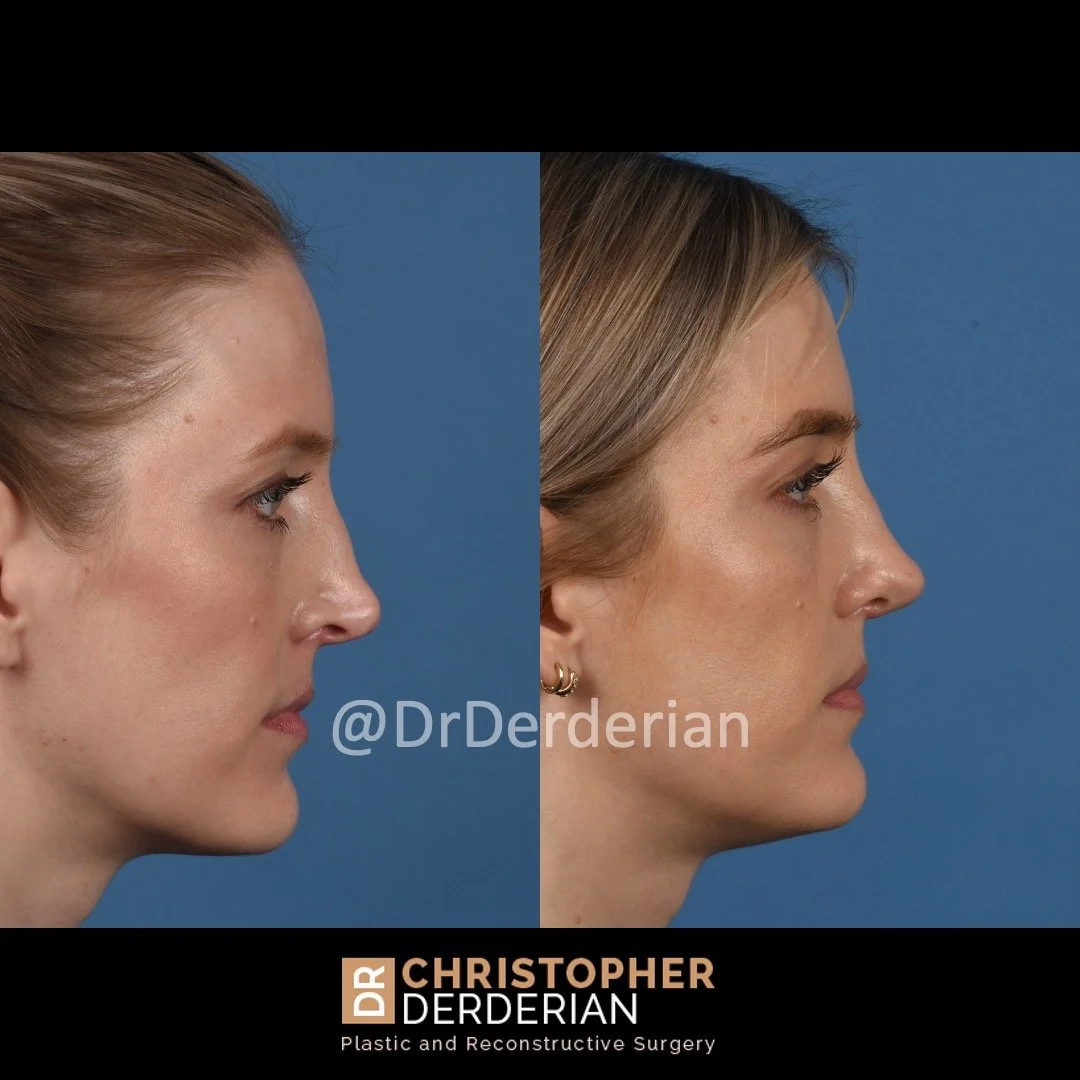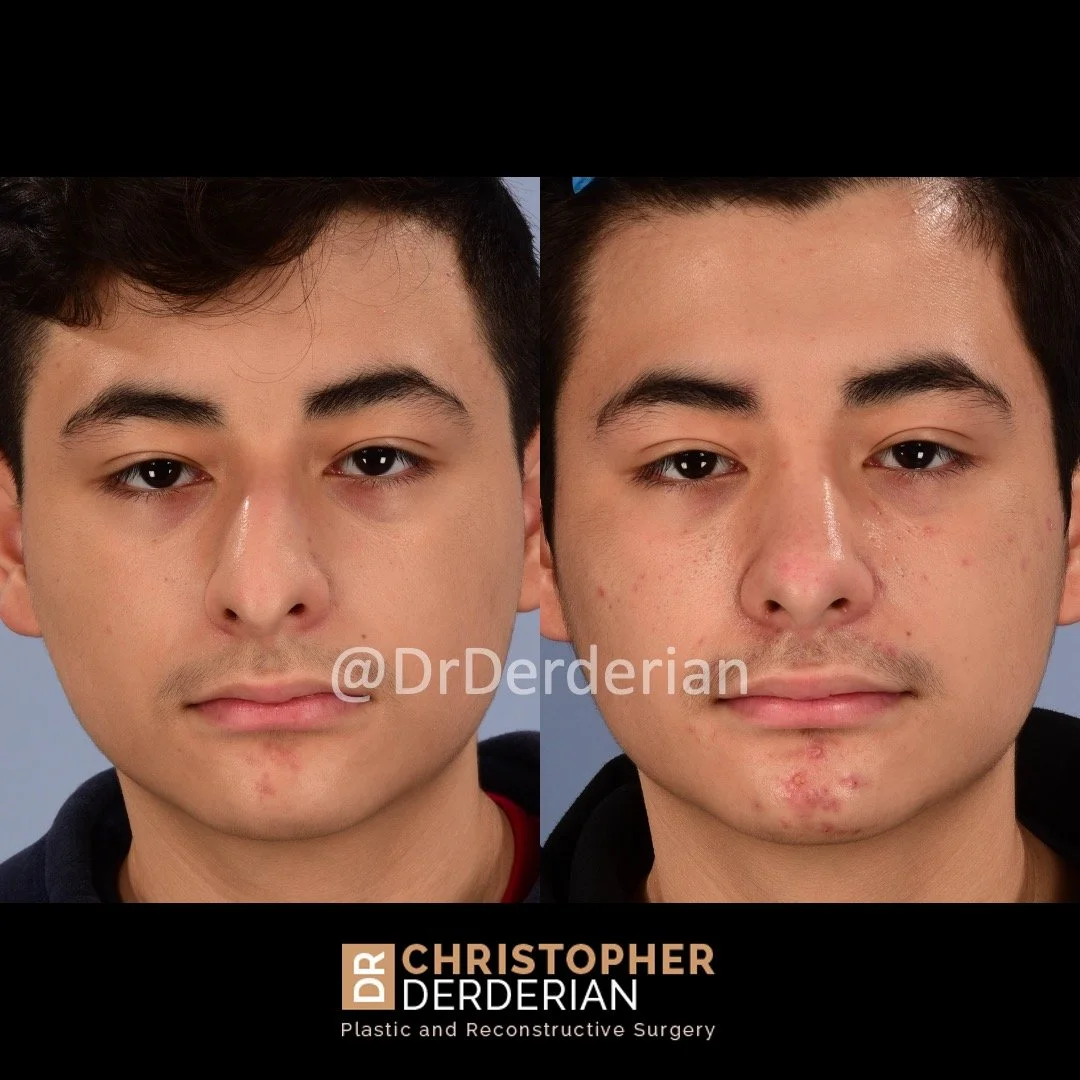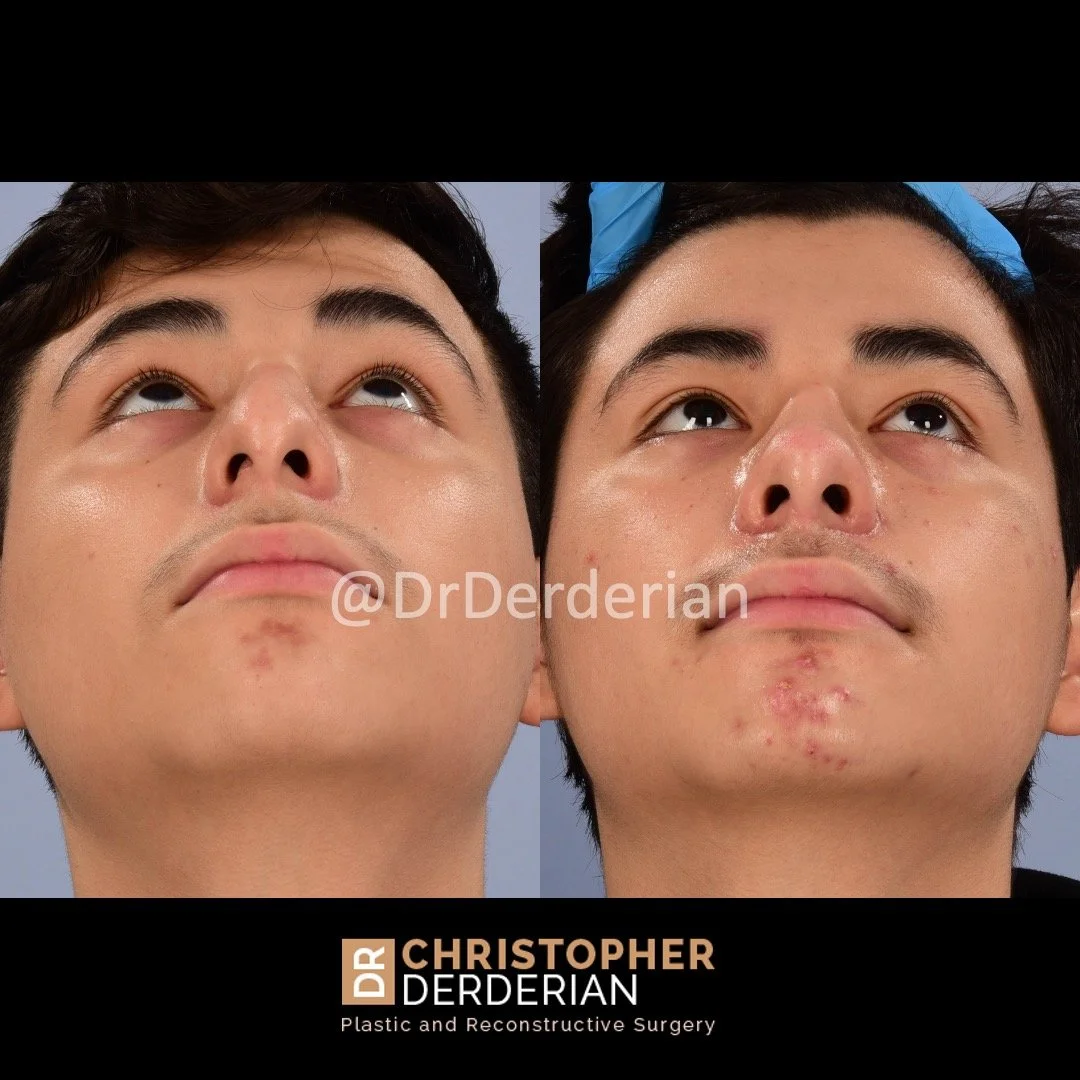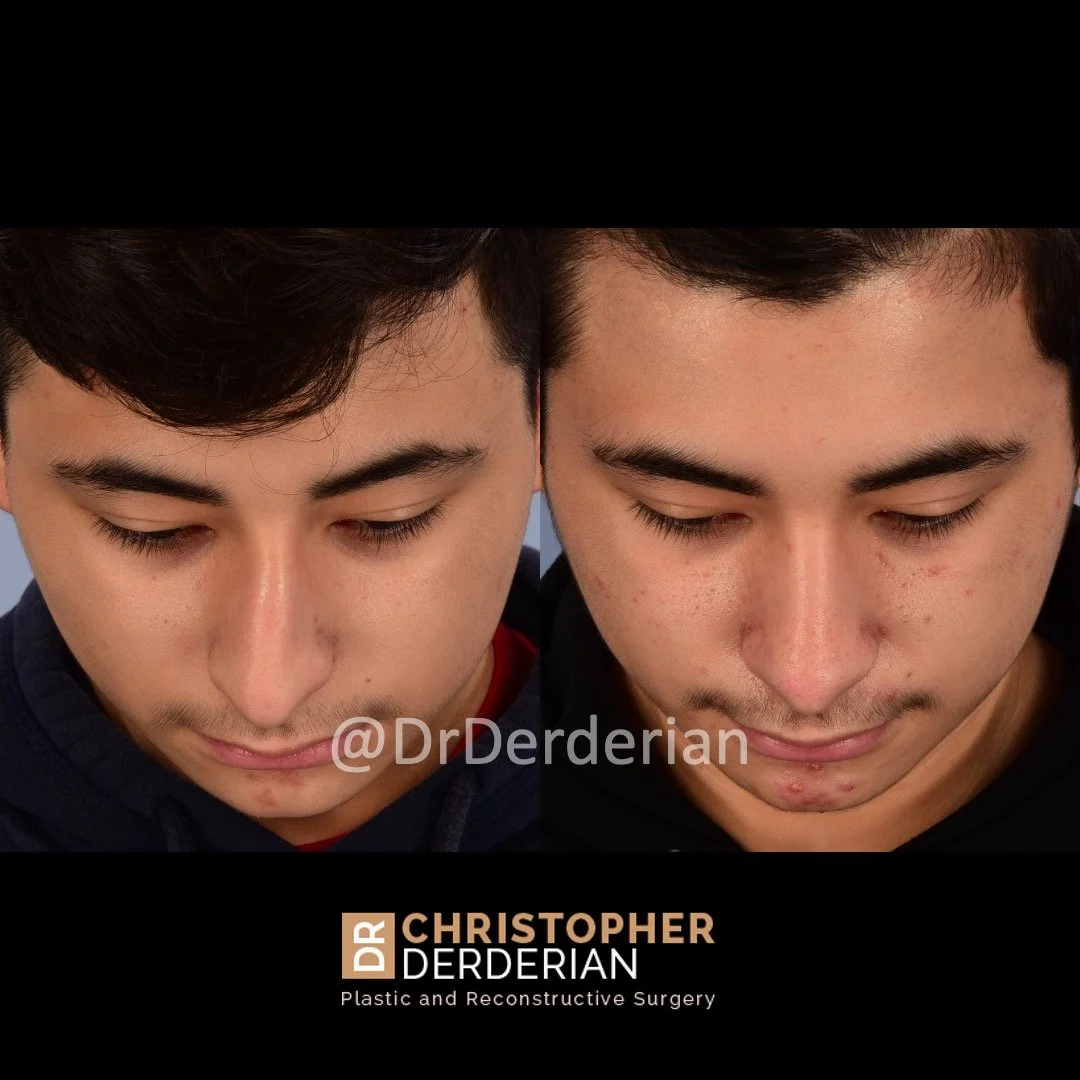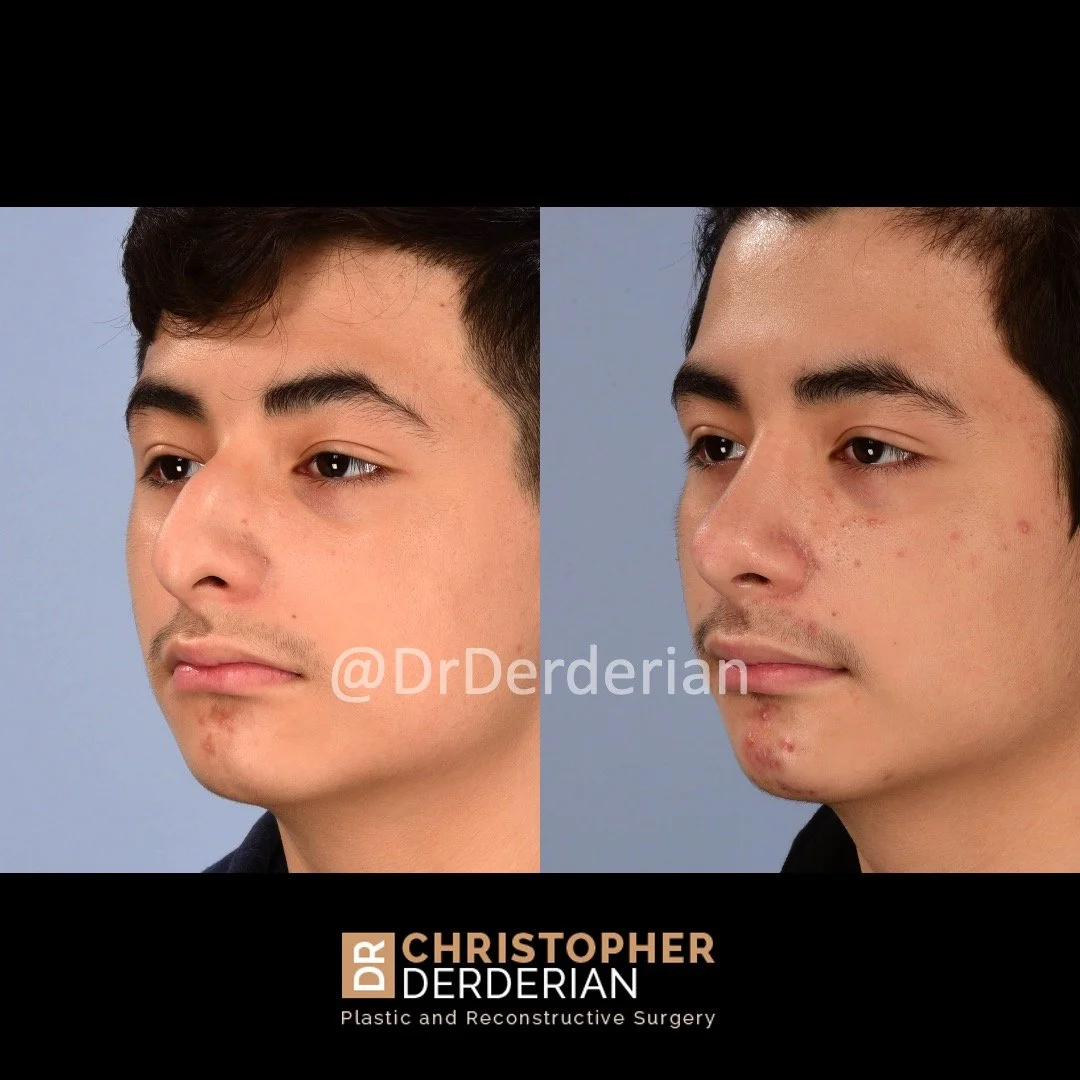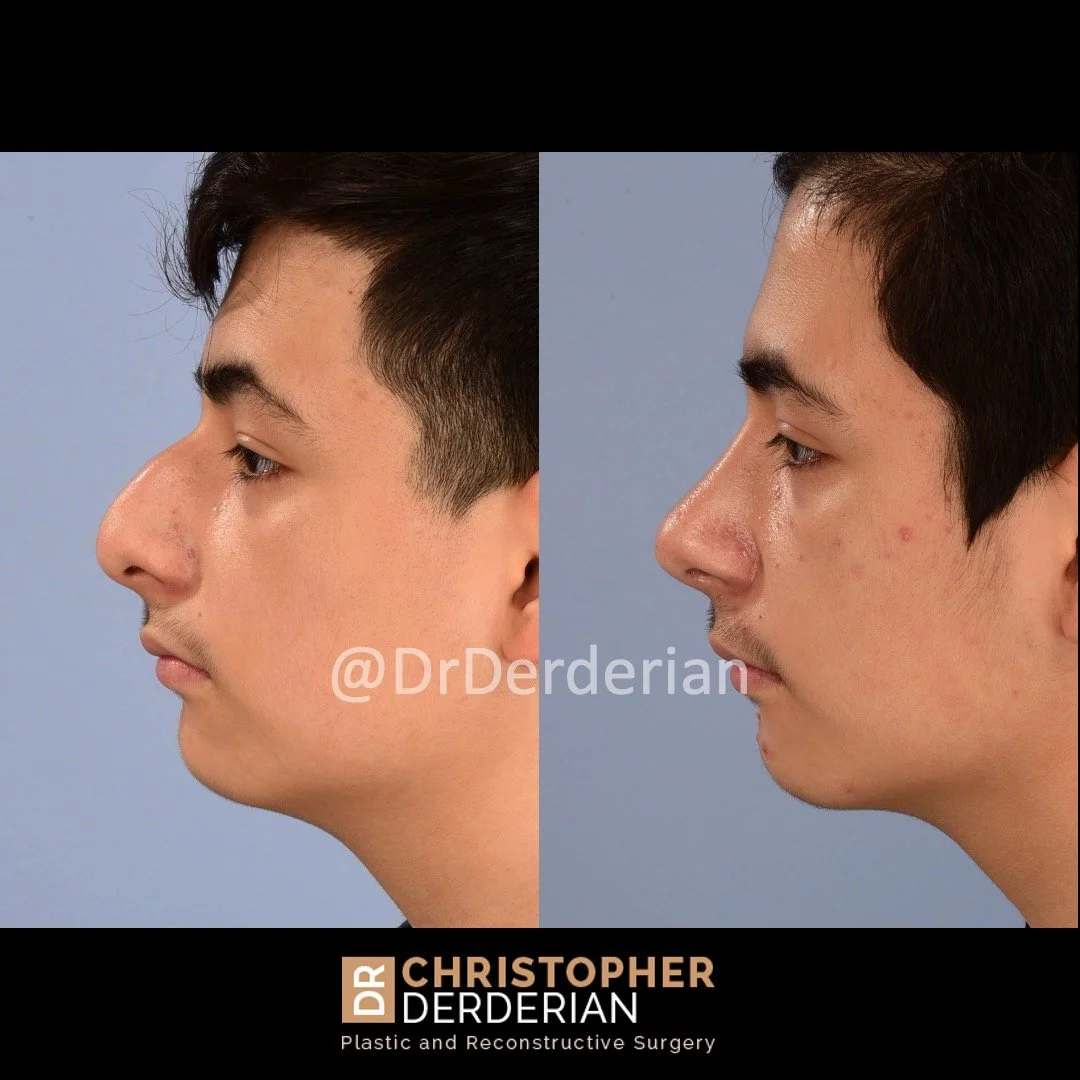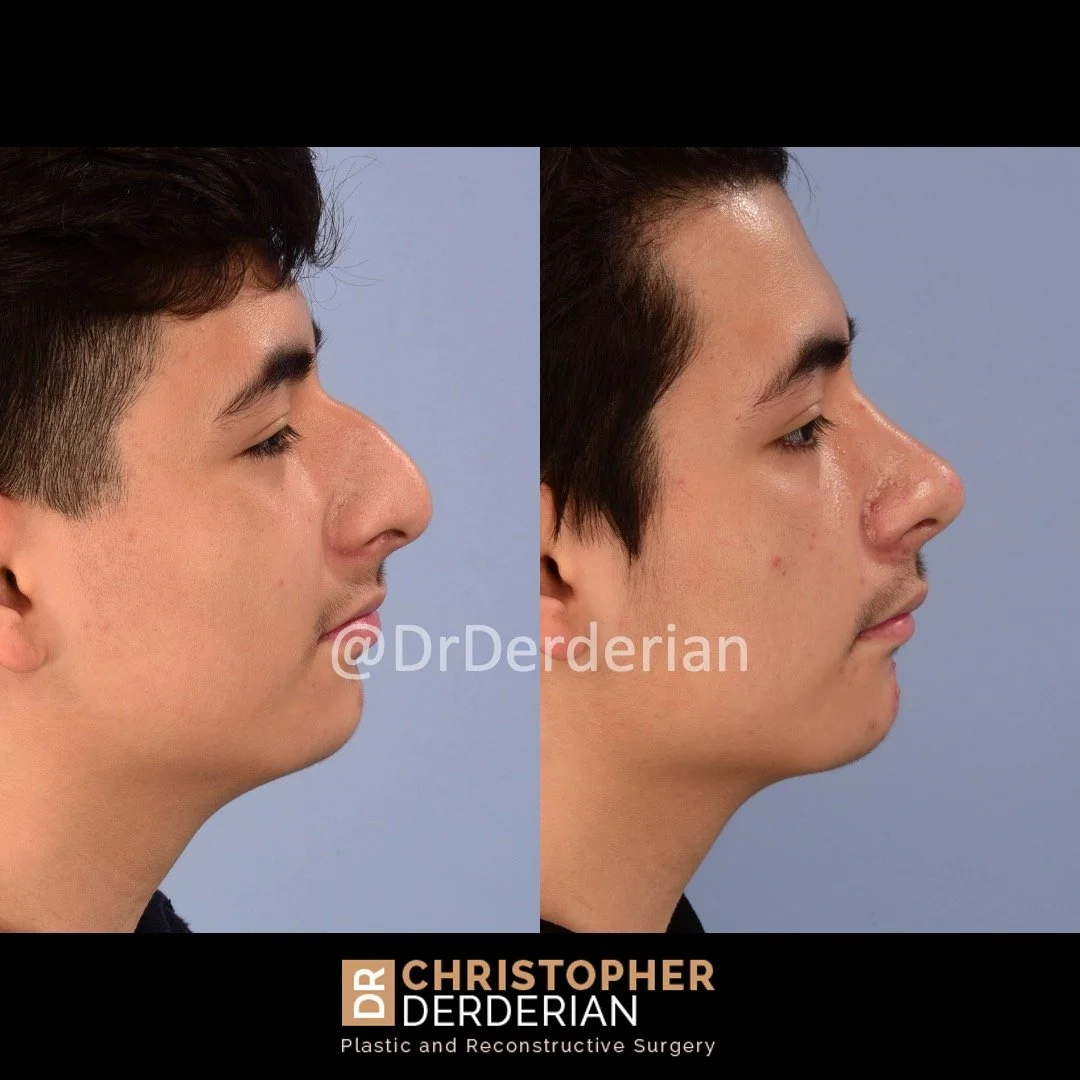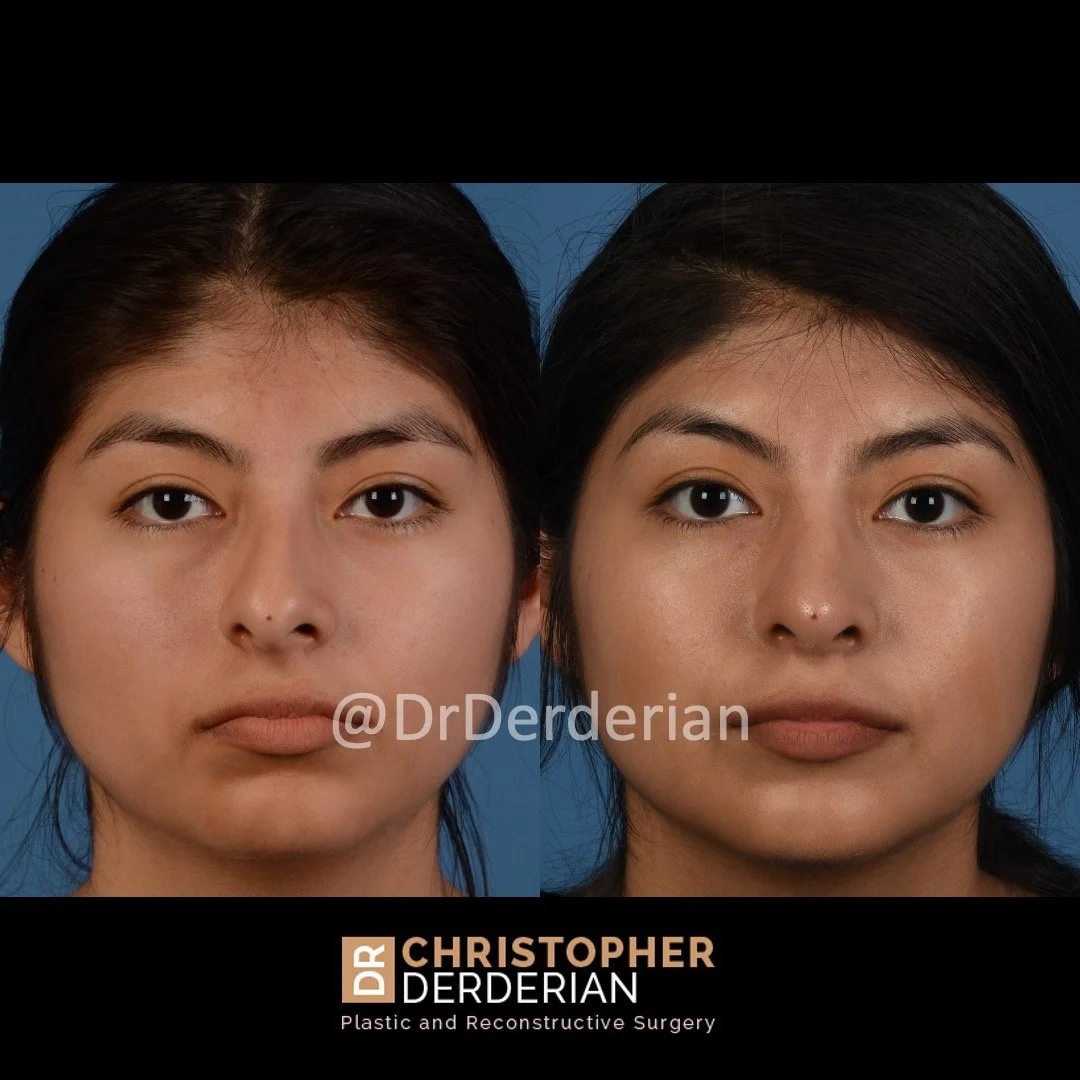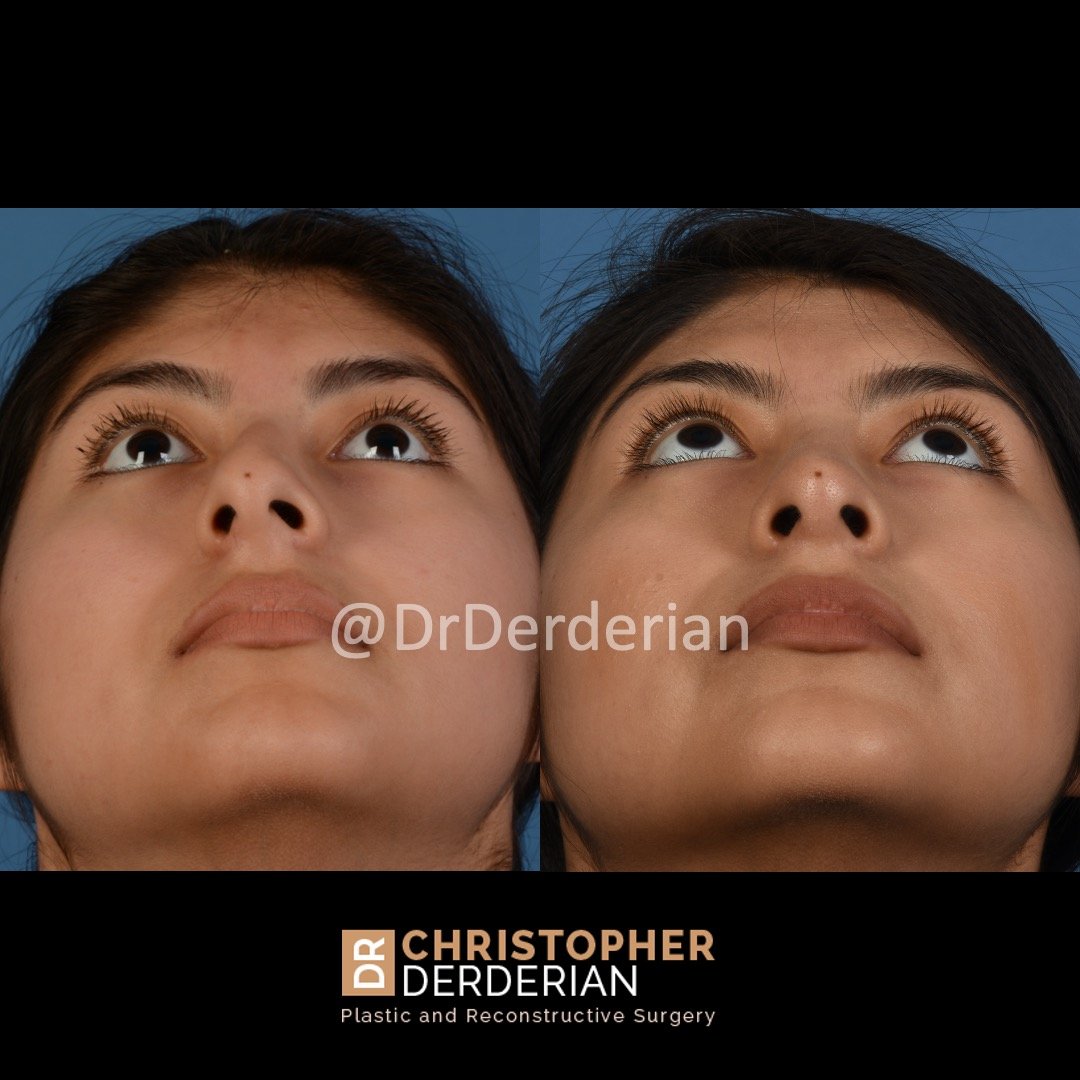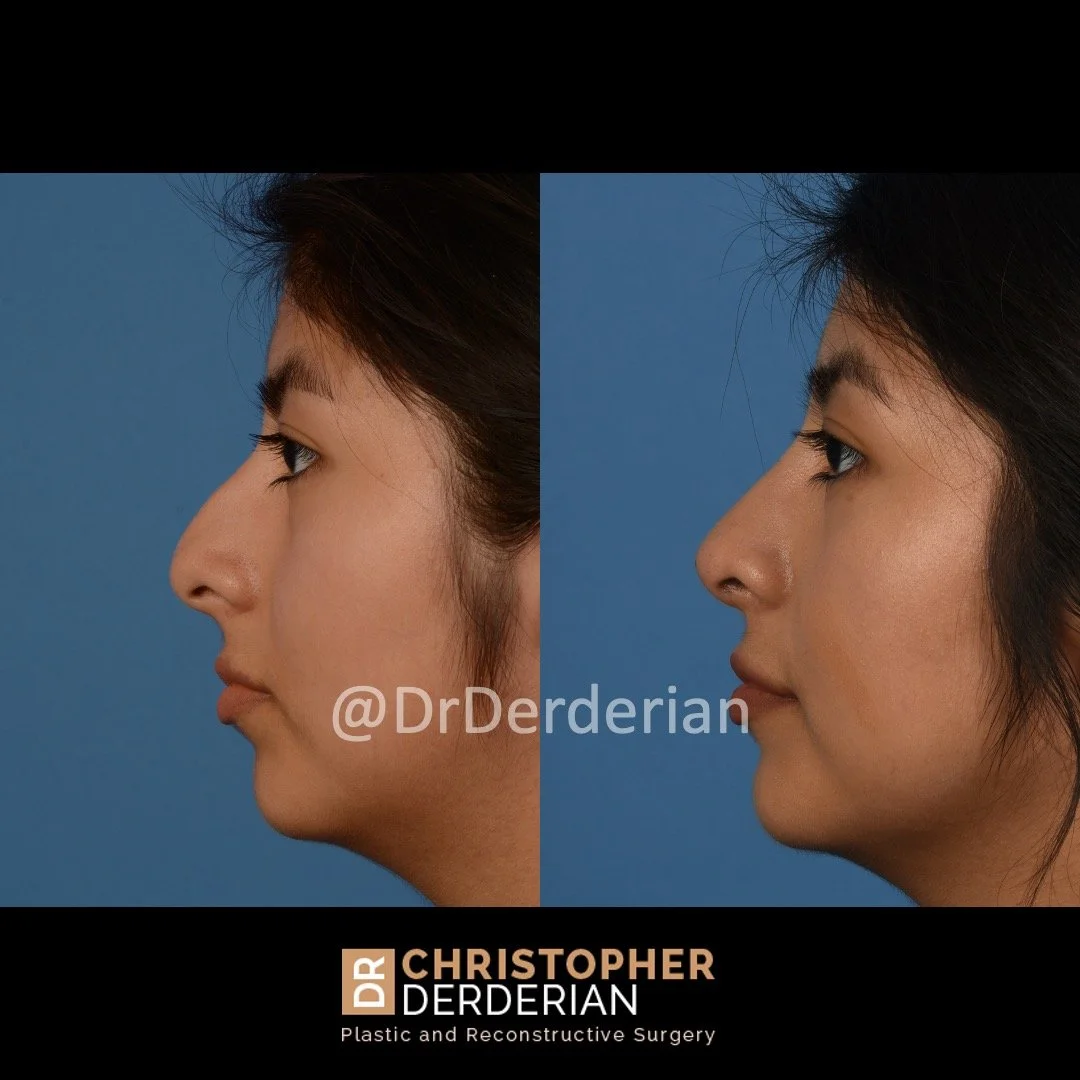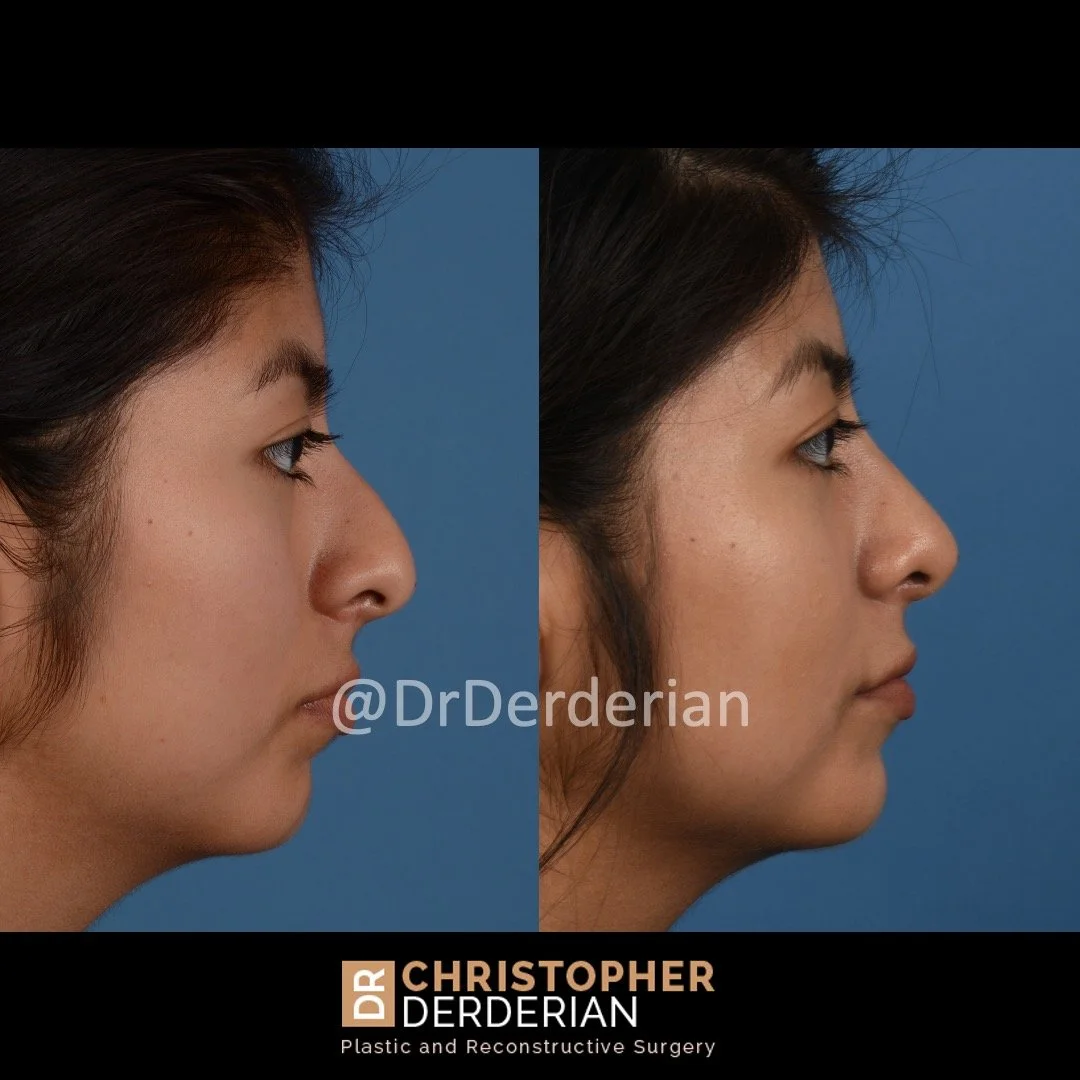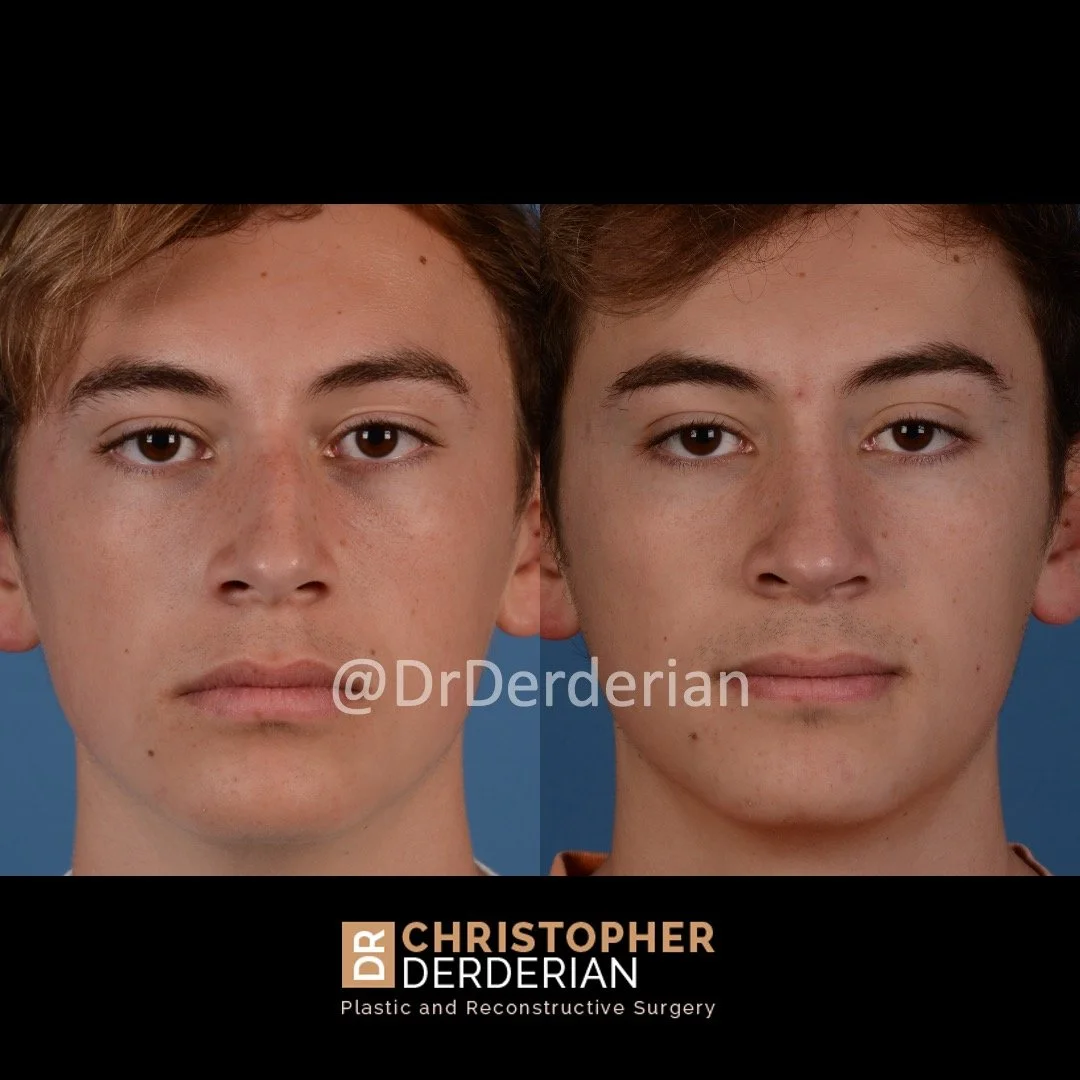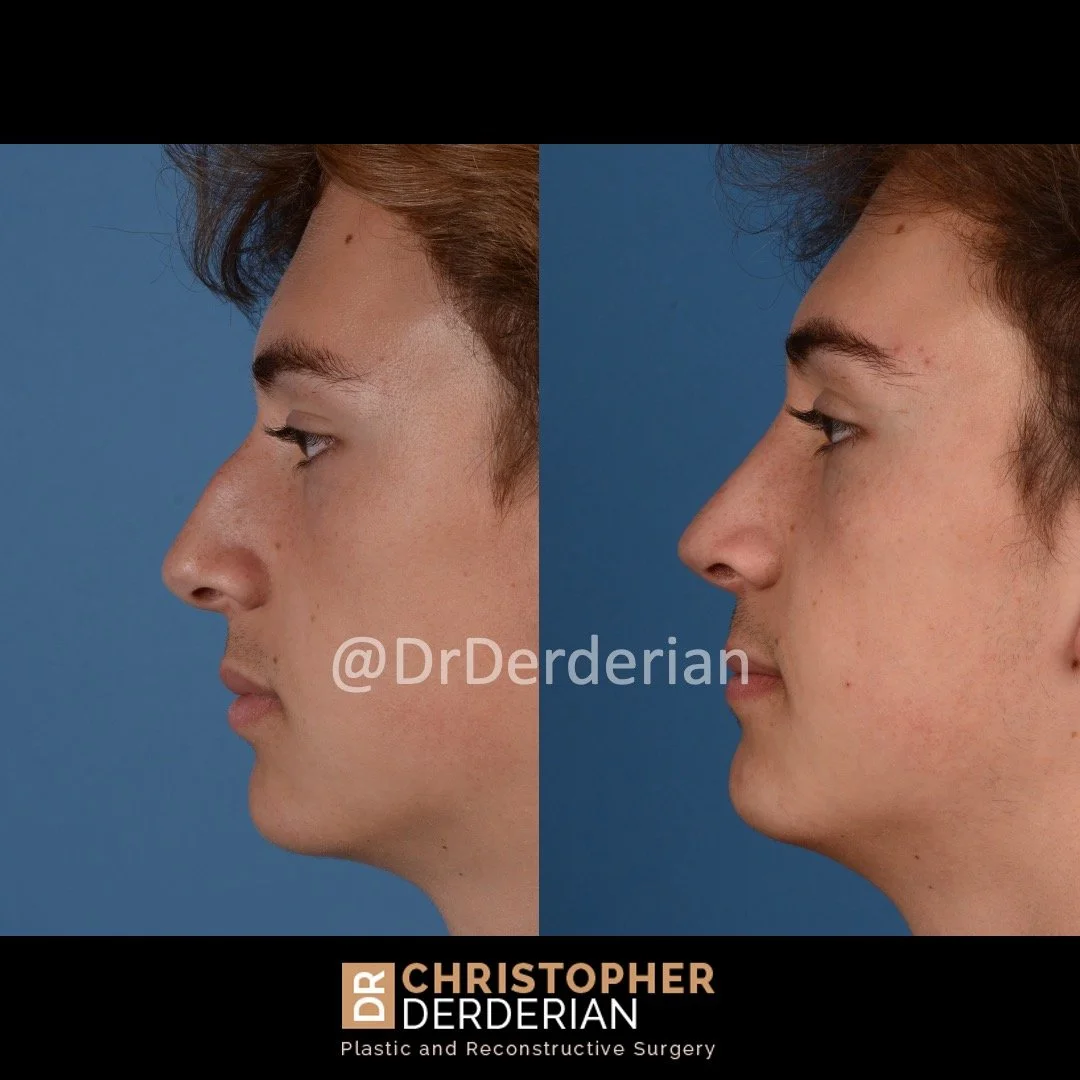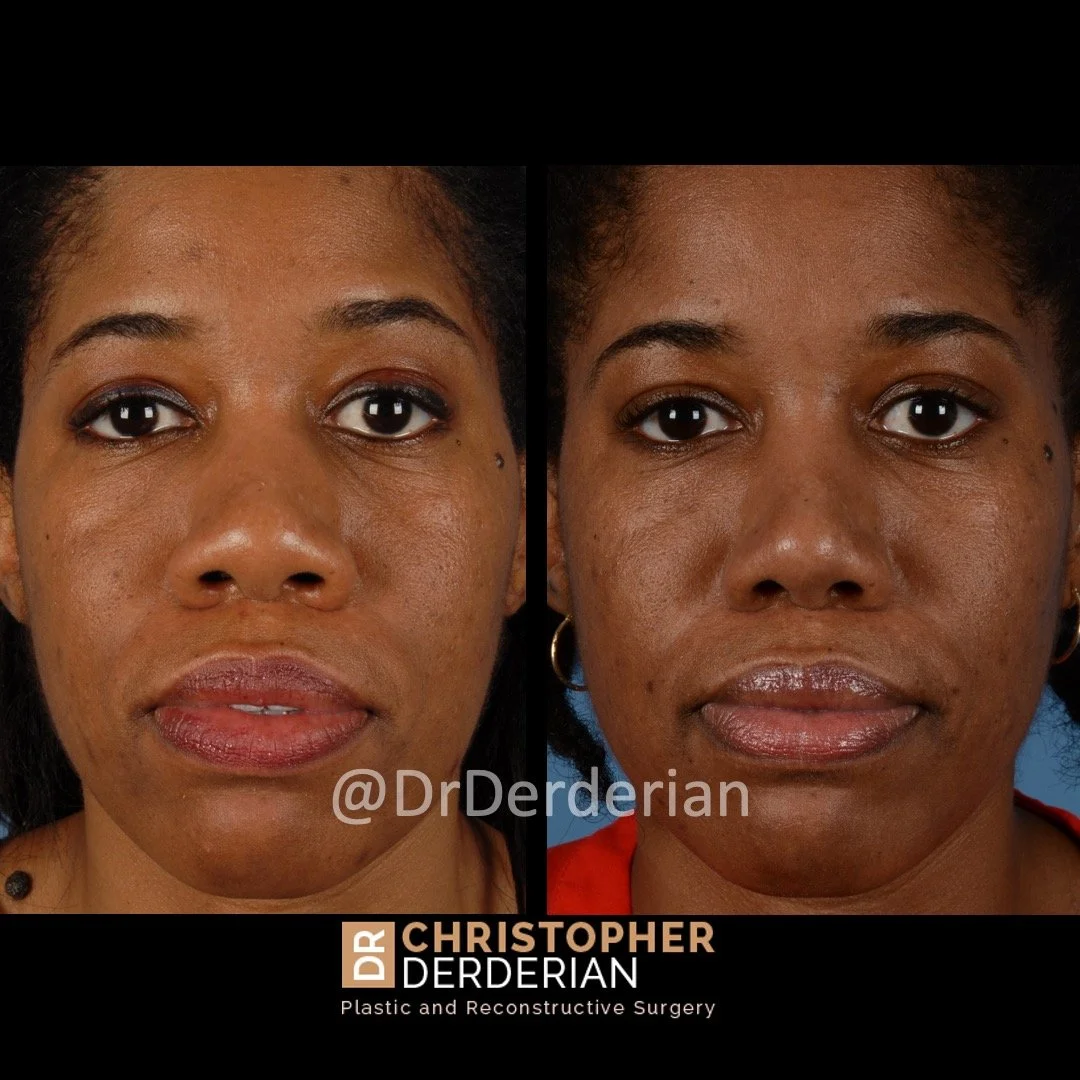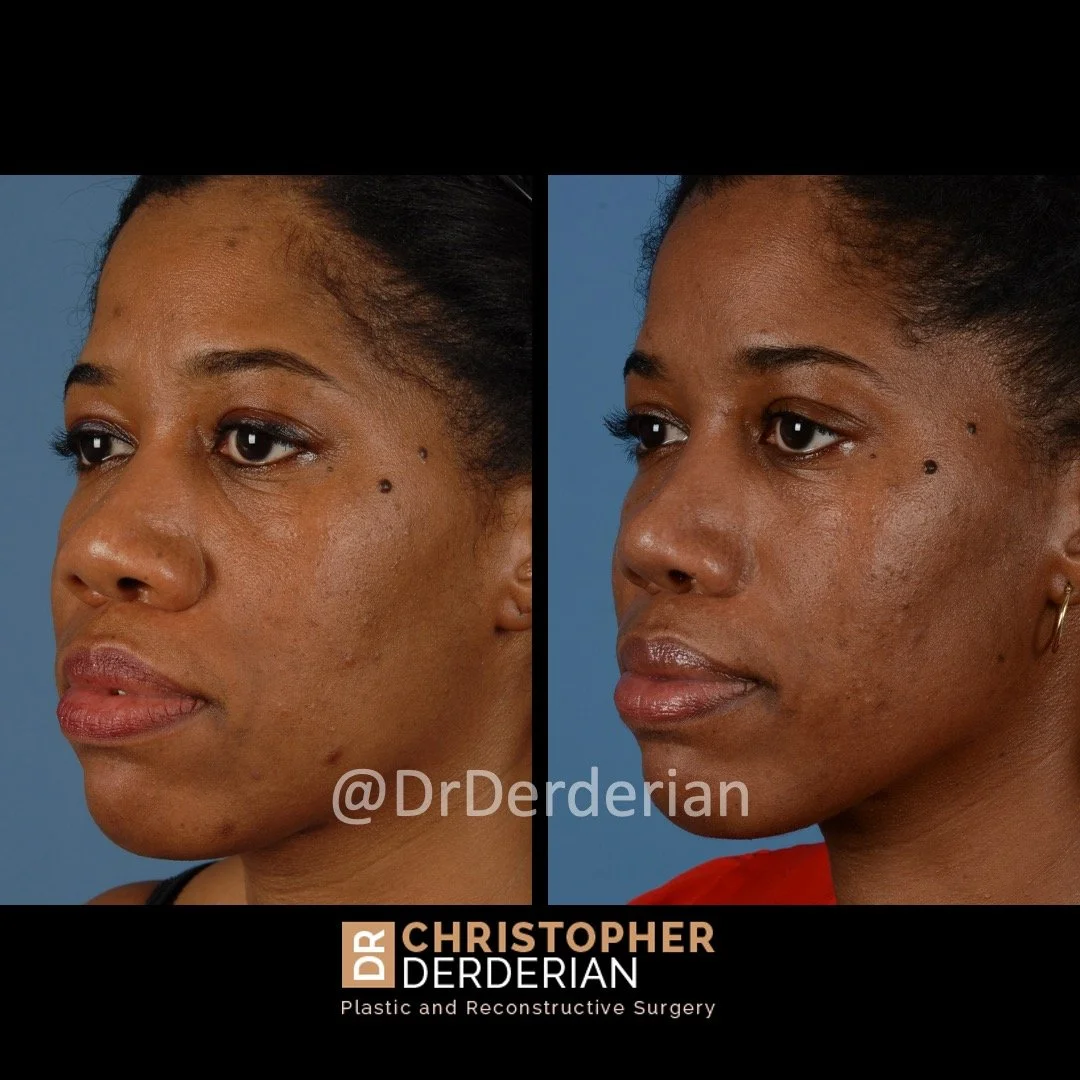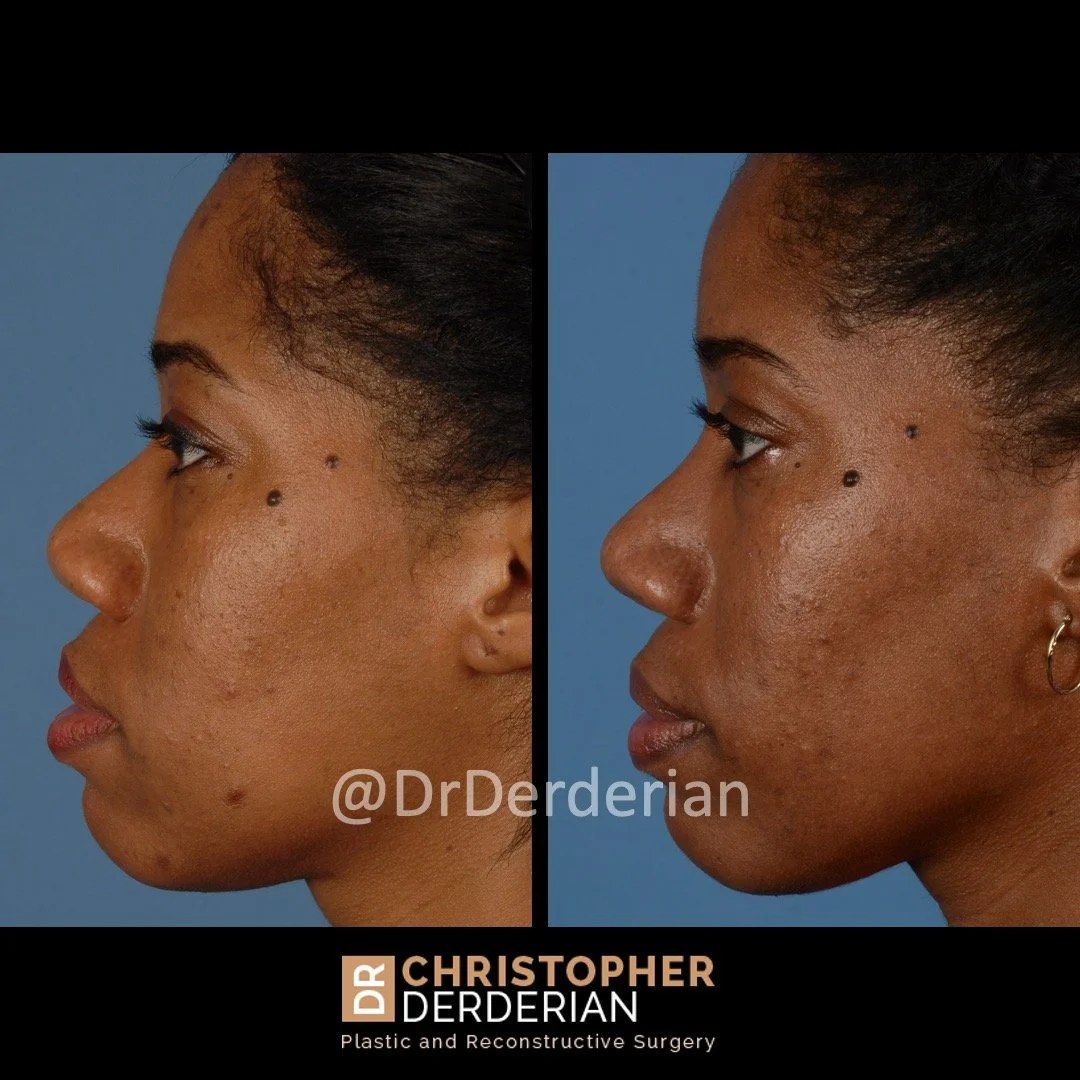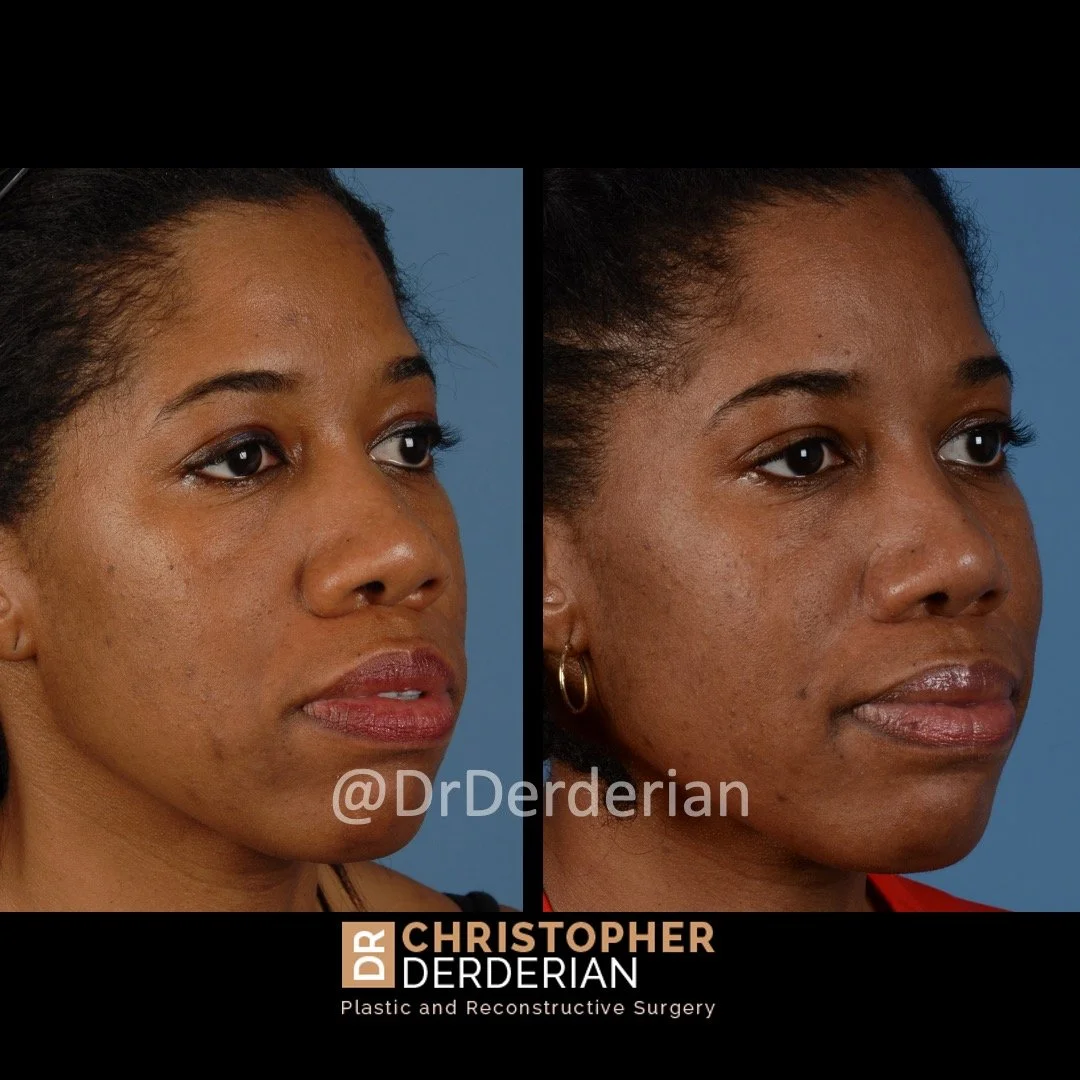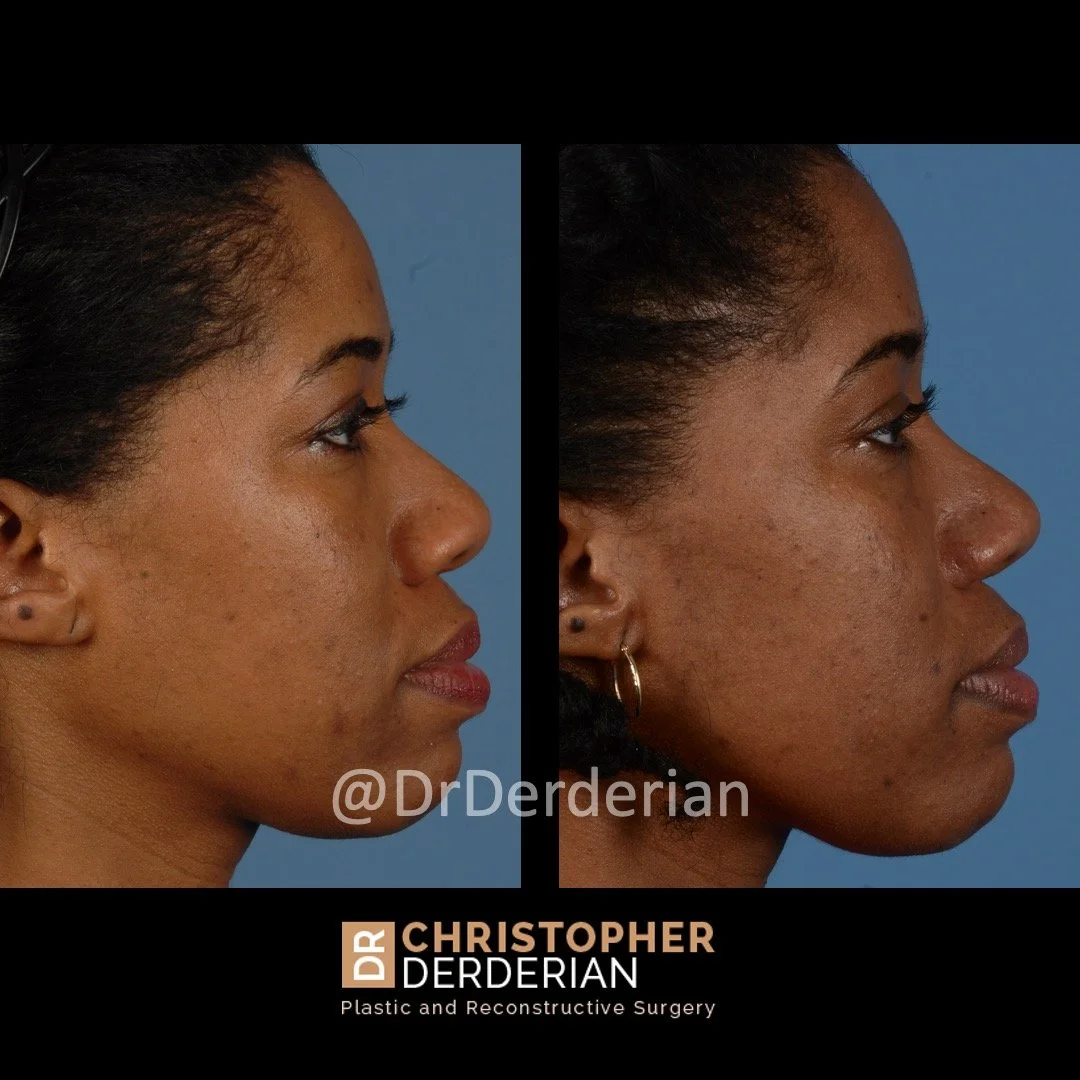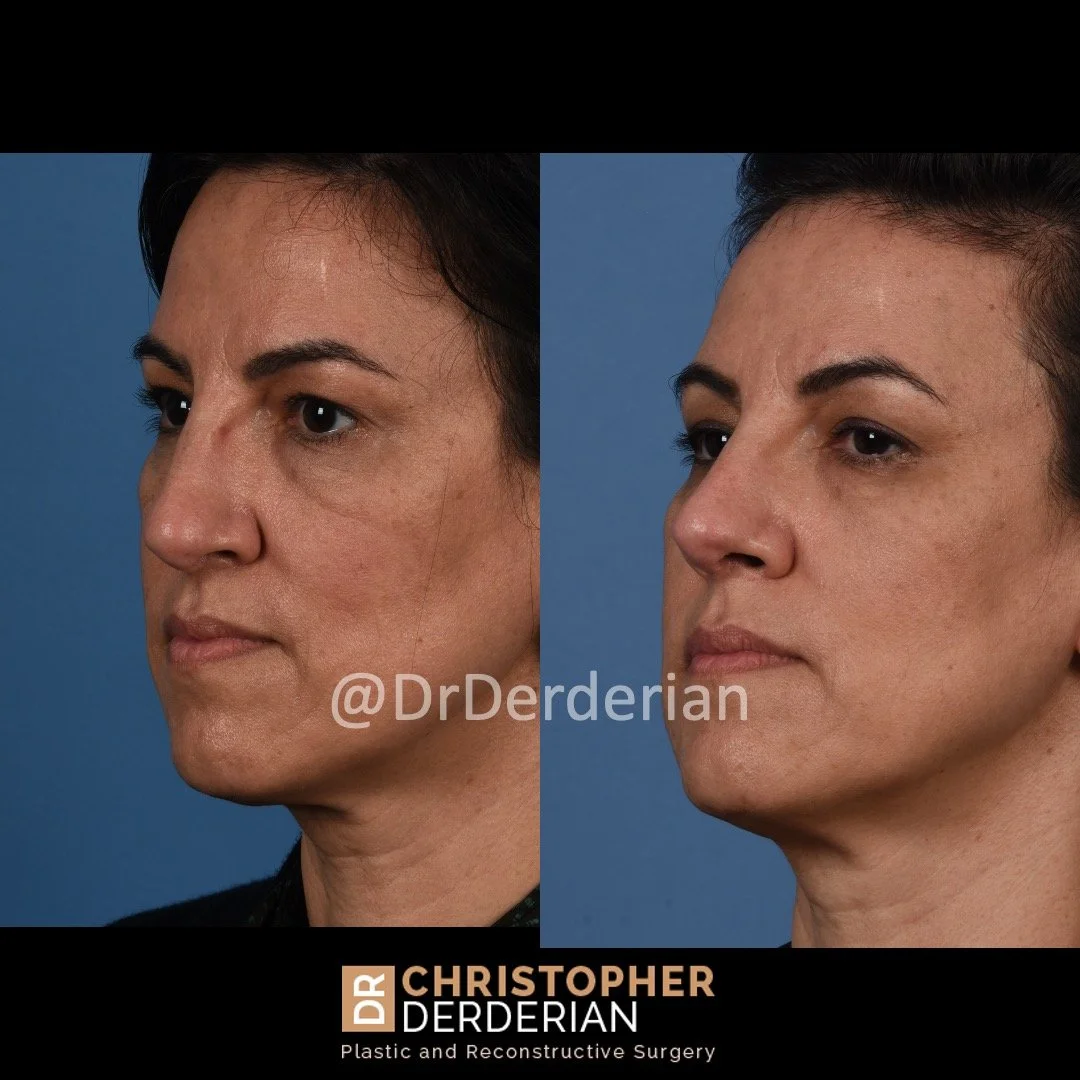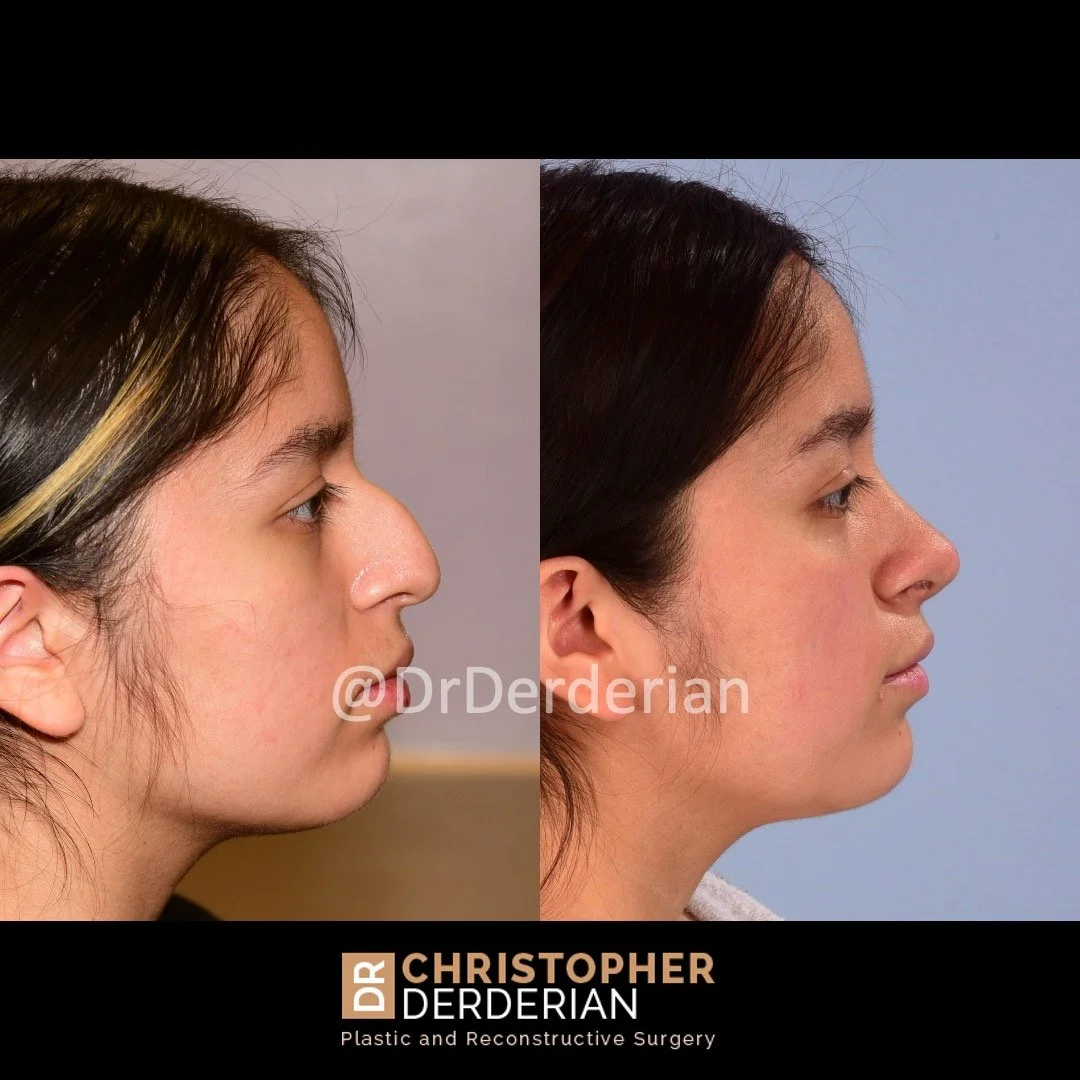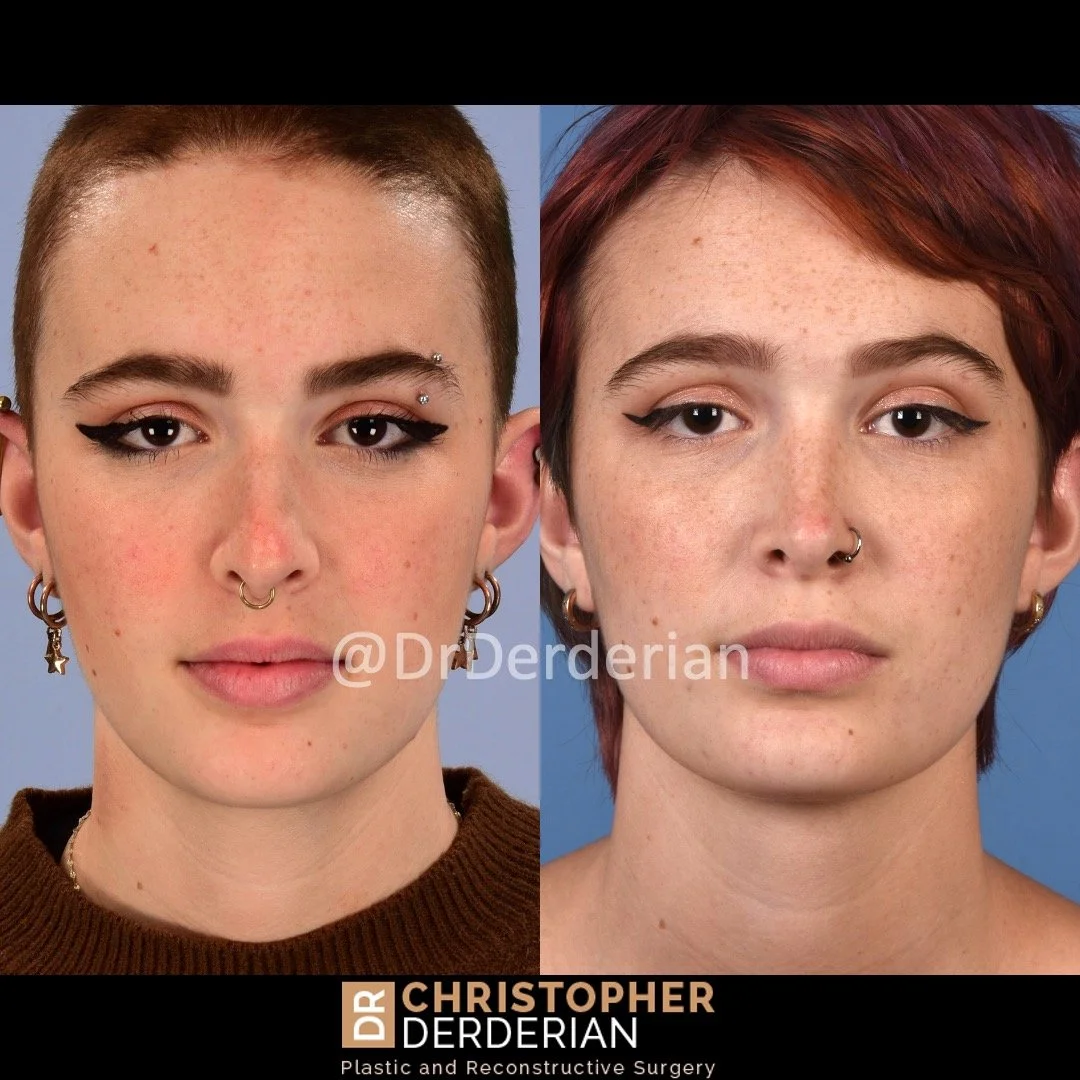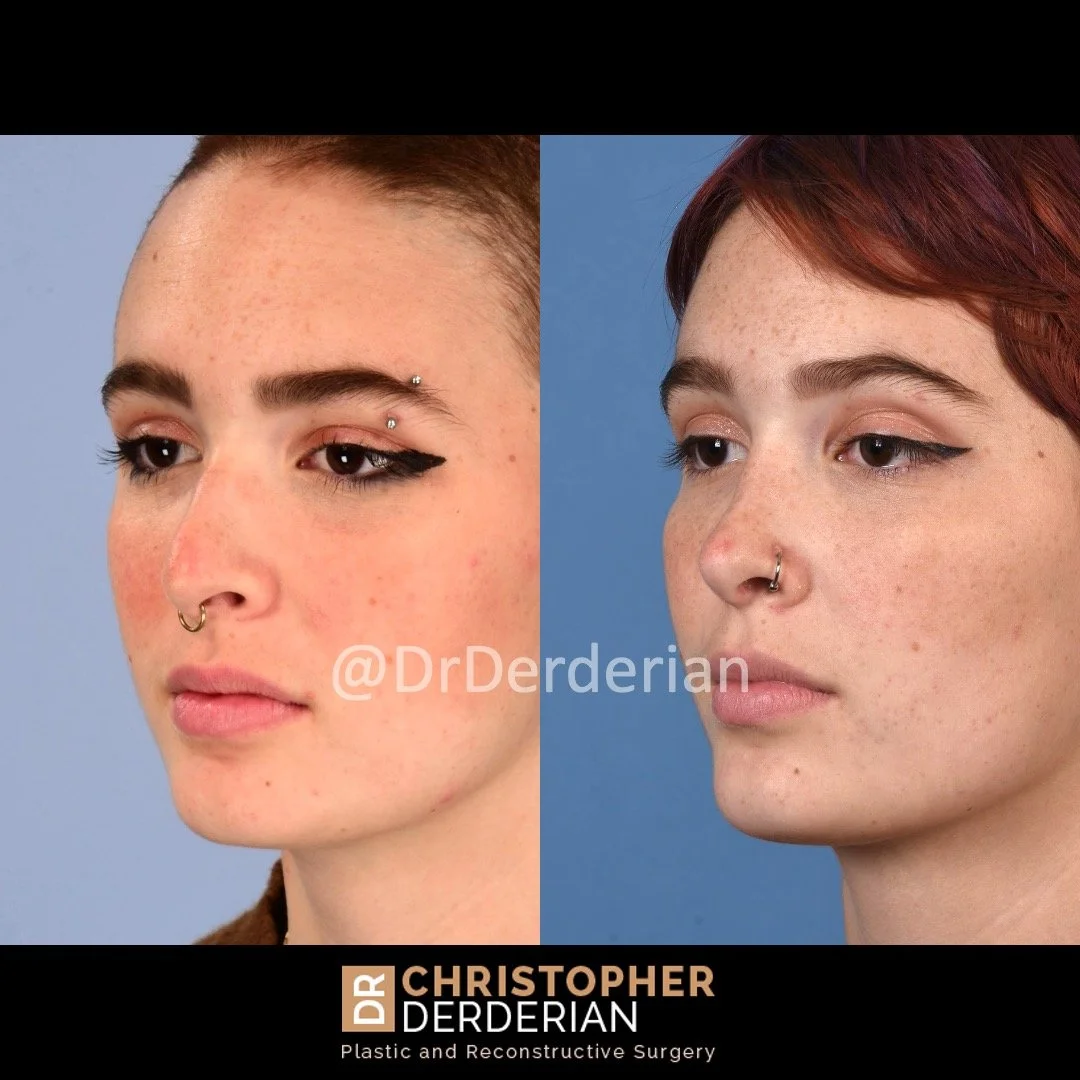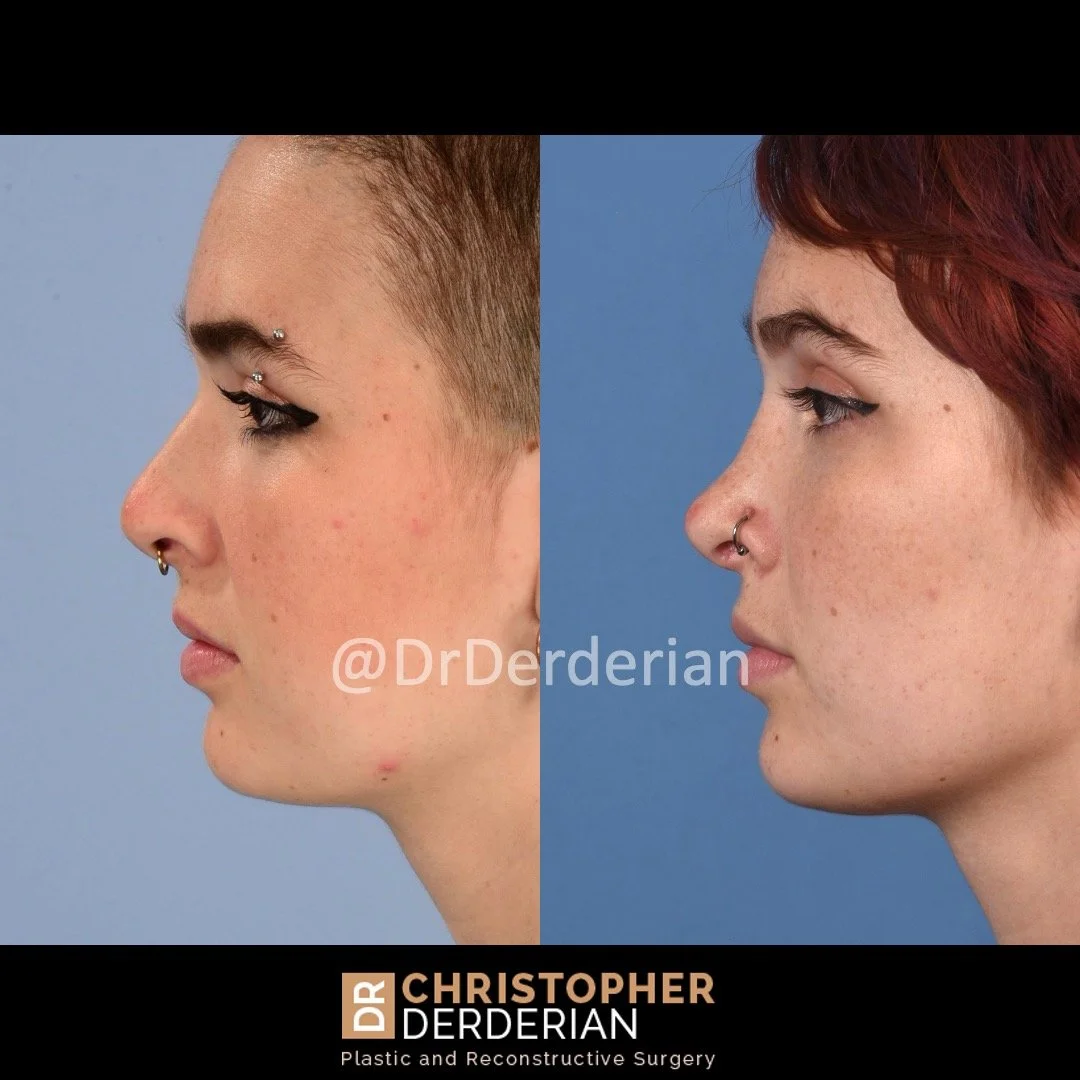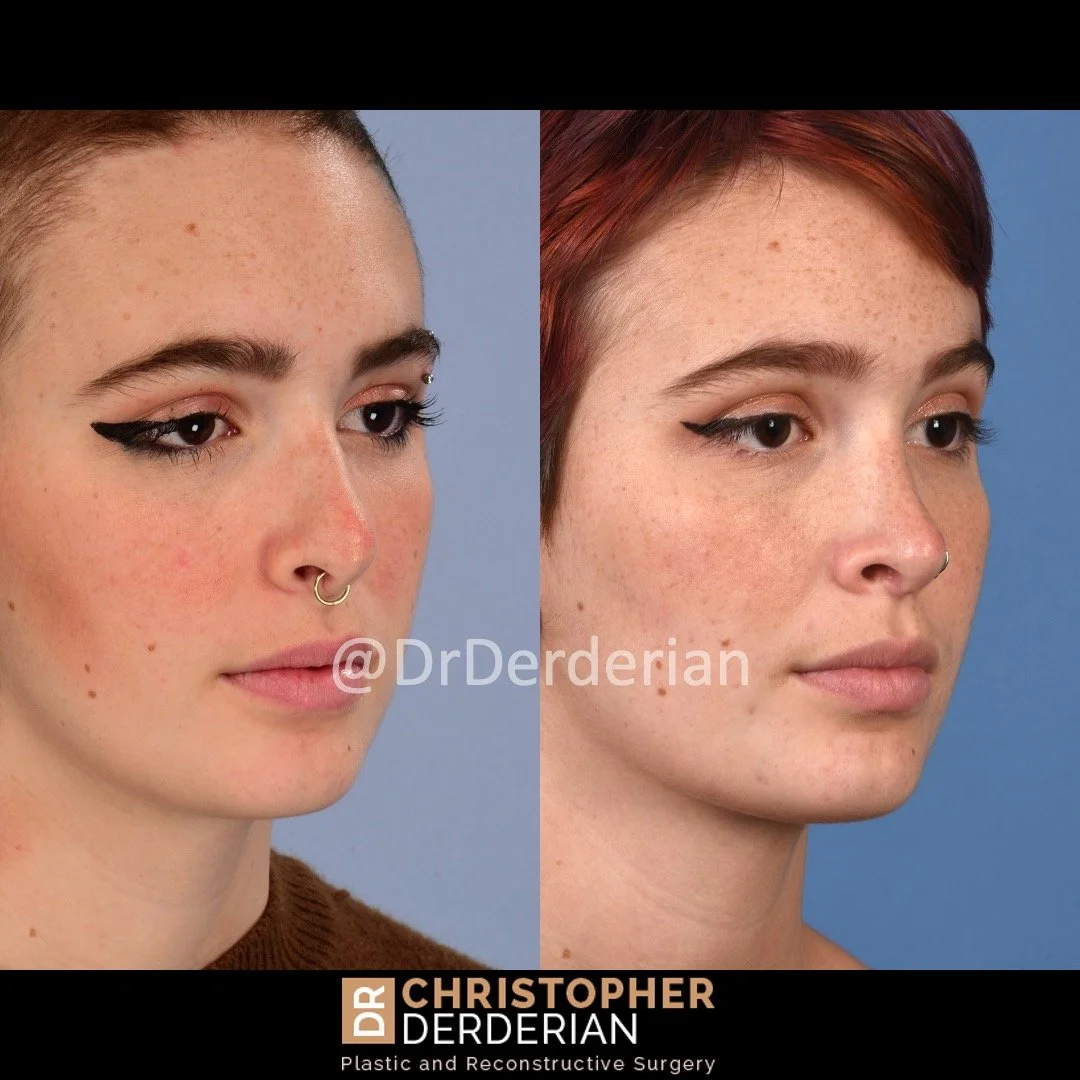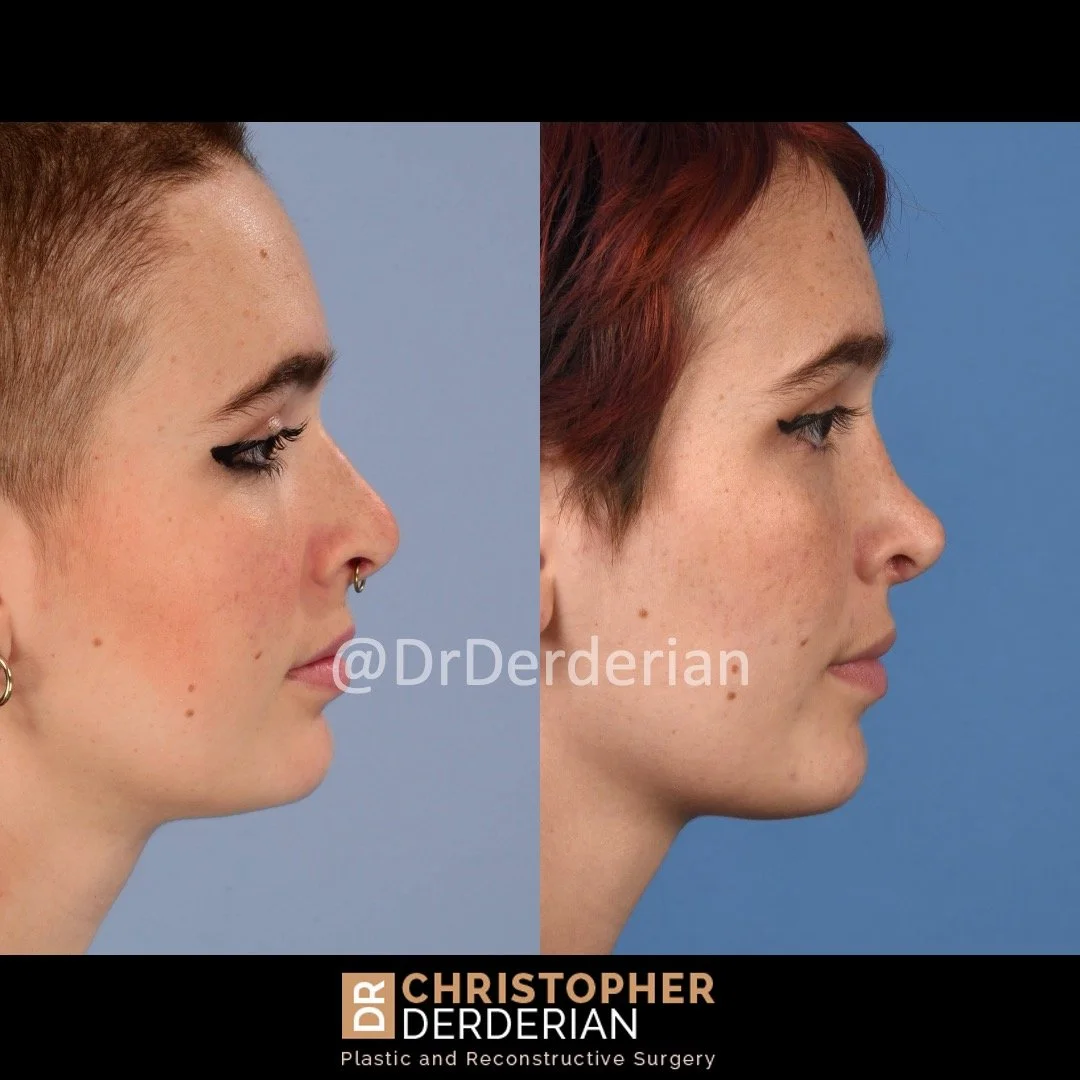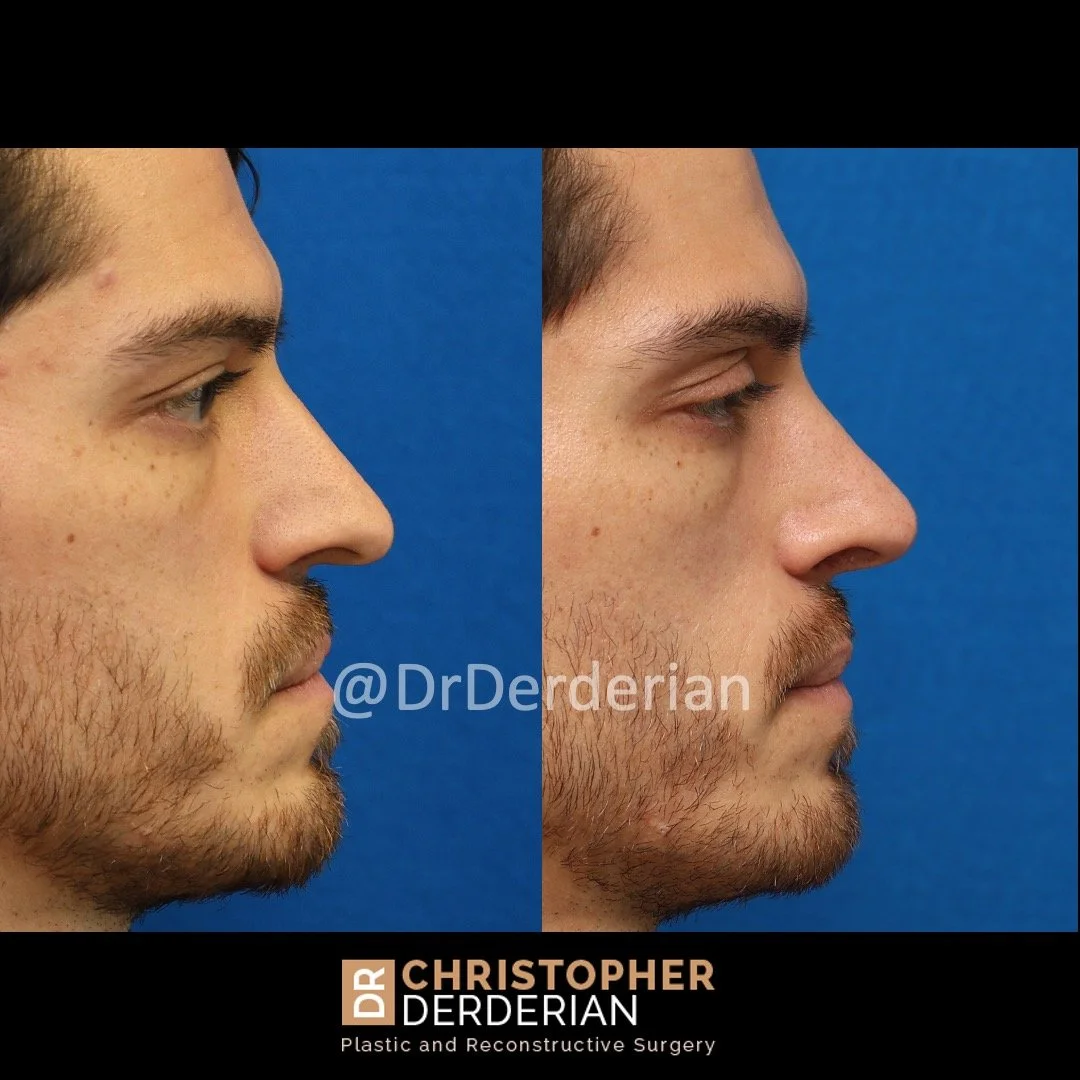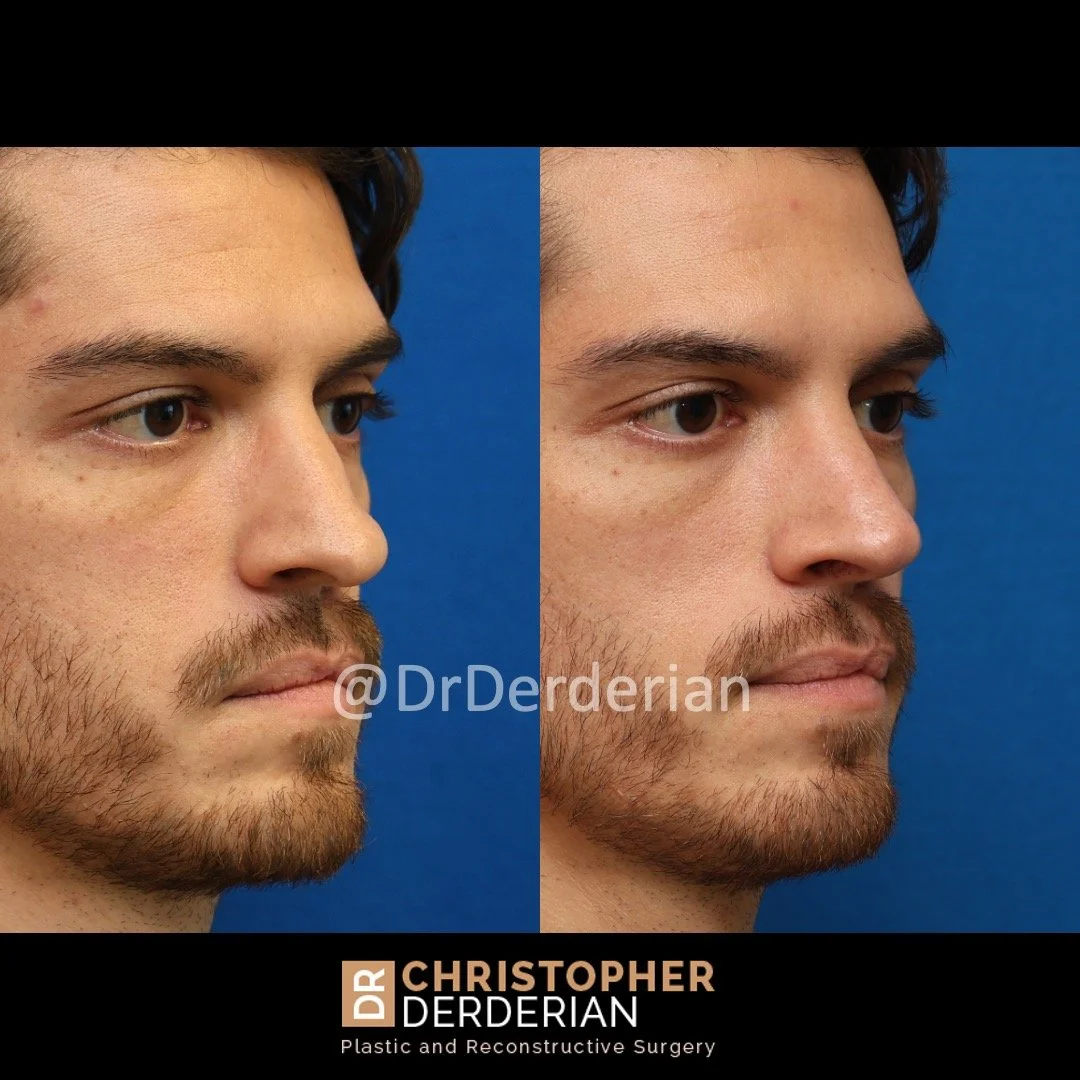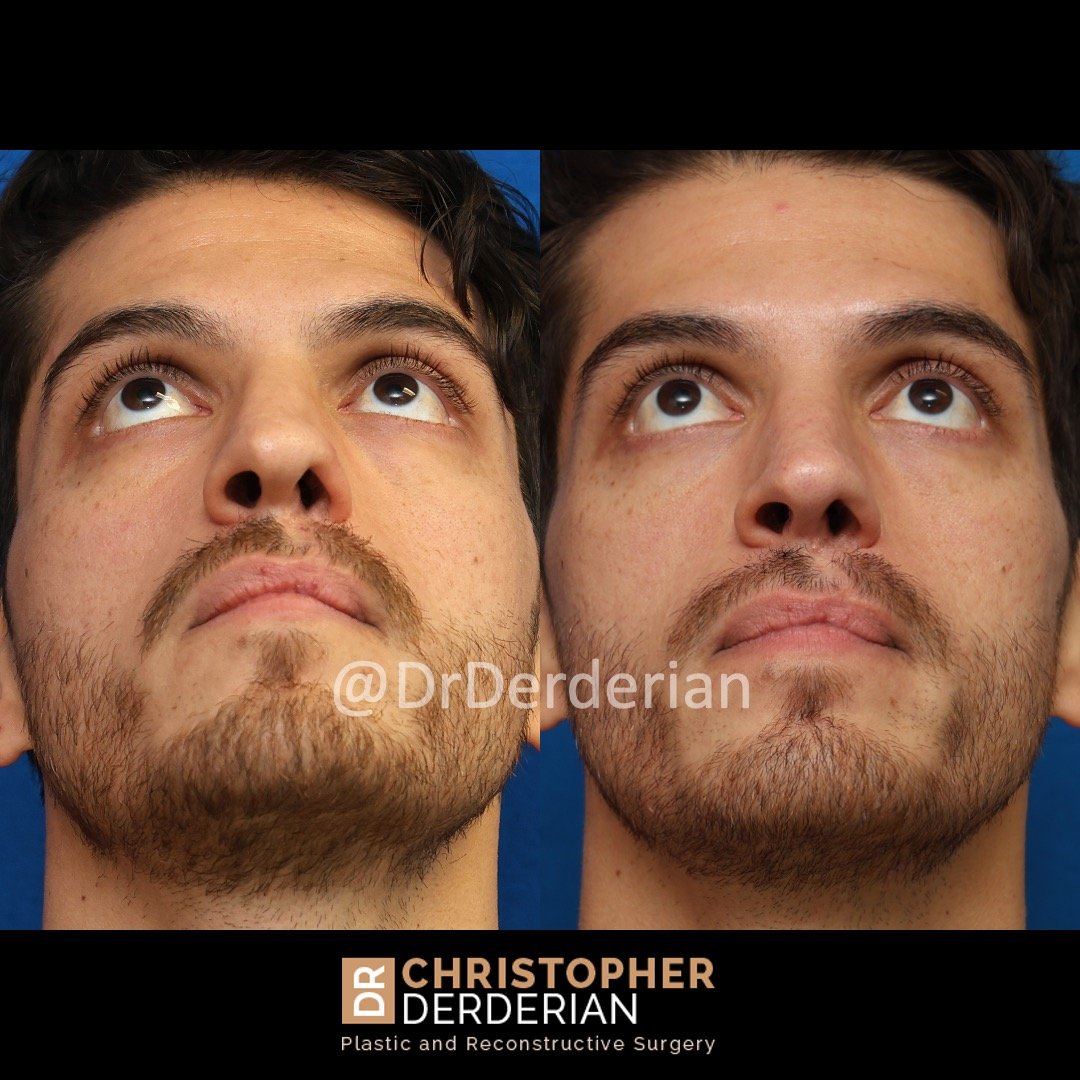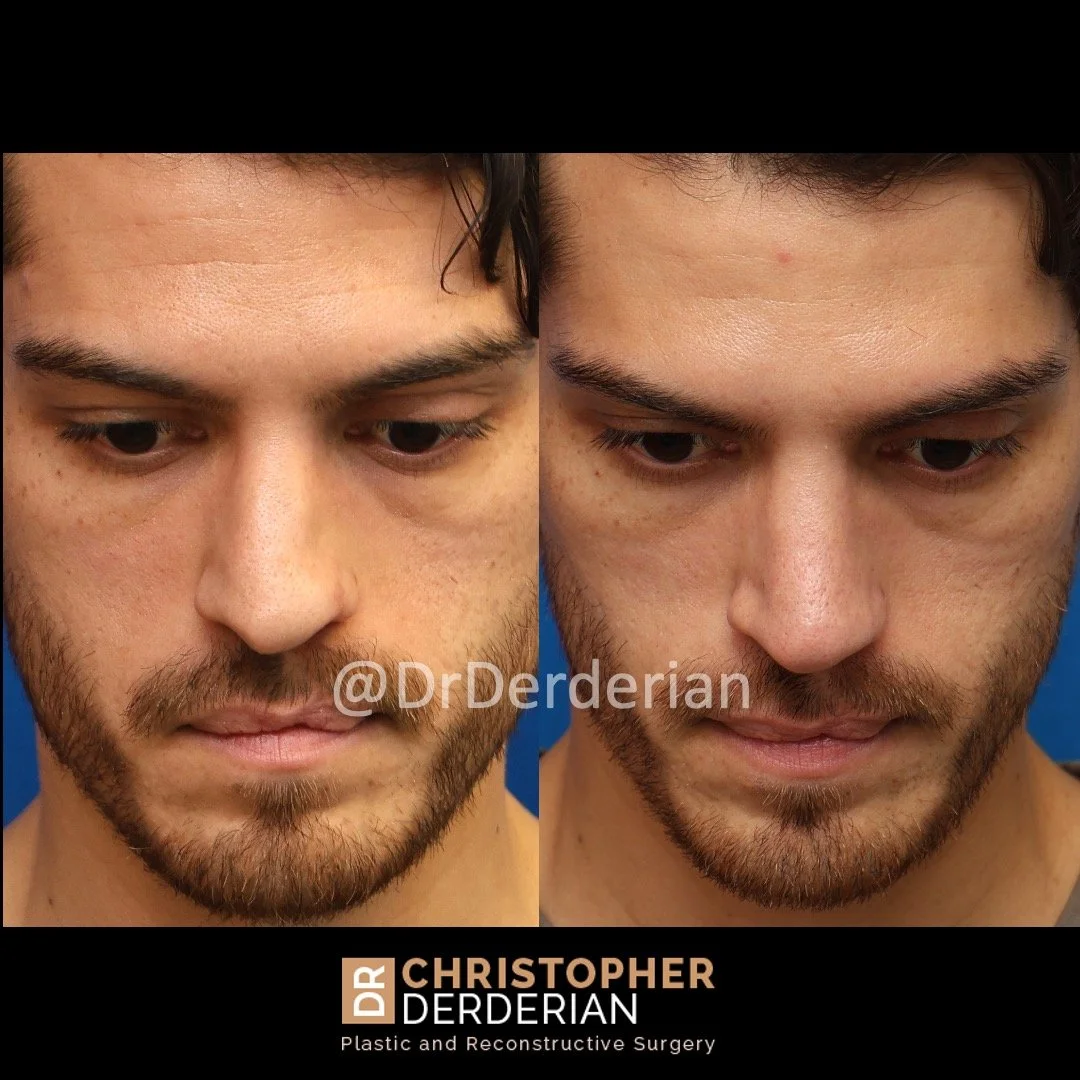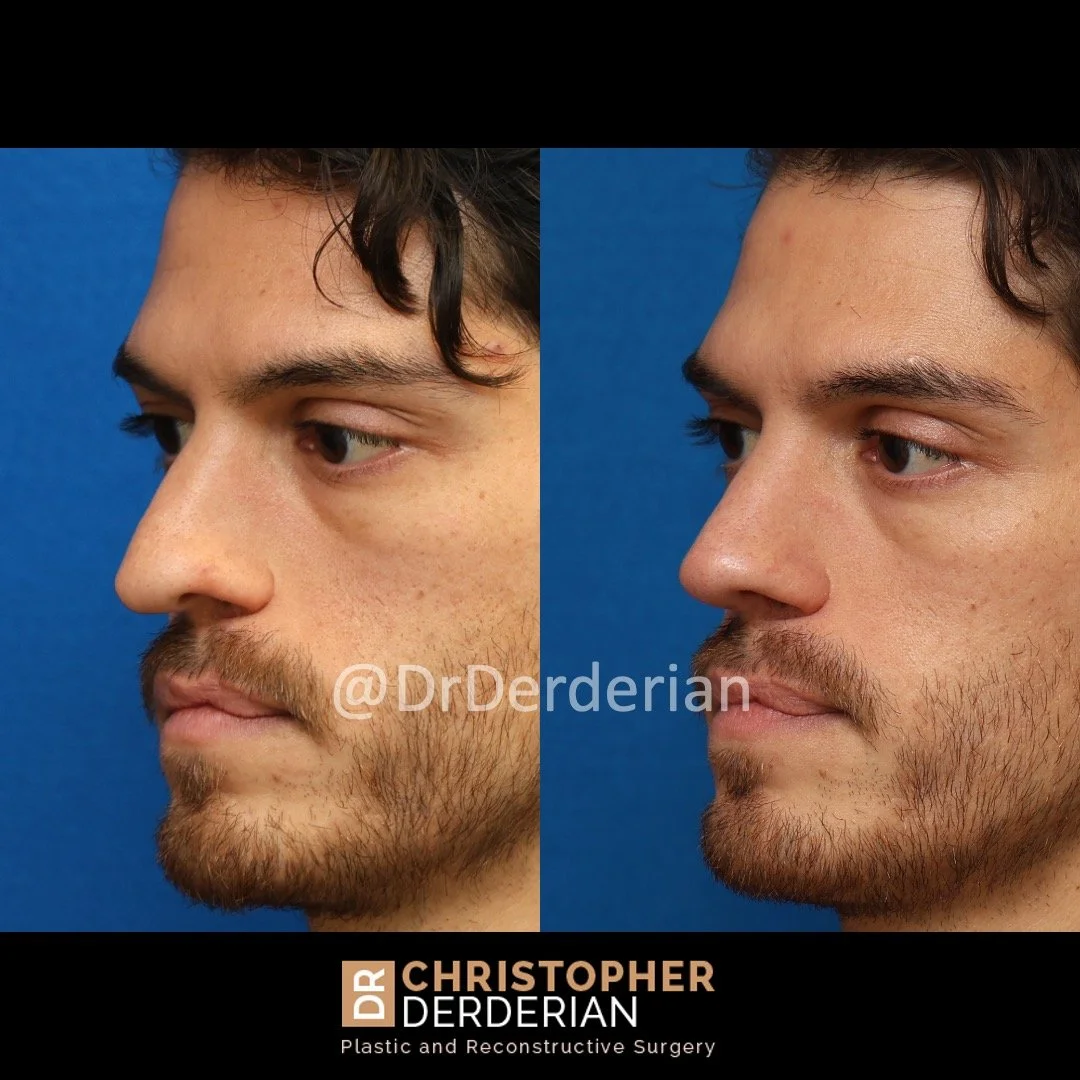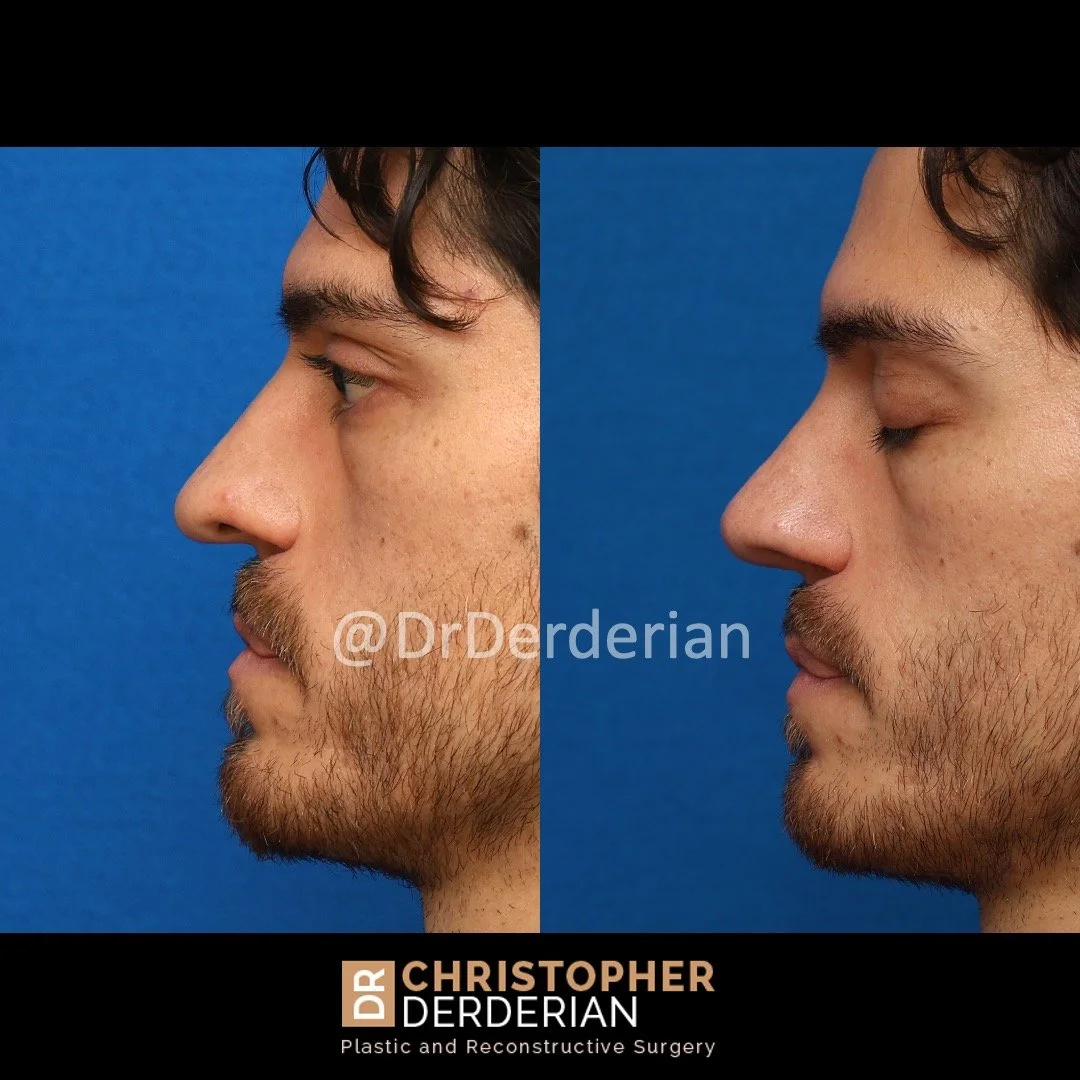Rhinoplasty Surgery
& Nose Job in Dallas,
Texas
Rhinoplasty (nose job) is a surgery that improves the appearance of the nose by changing its shape, size, symmetry and/or proportions to the face. It can also be combined with functional procedures to improve breathing through the nose, such as a septoplasty for deviated septum. Whether motivated by aspirations for improved appearance or functional concerns, the decision to undergo rhinoplasty is deeply personal and it can have a profoundly positive impact on an individual's overall well-being. Rhinoplasty is the focus of Dr. Derderian’s plastic surgery practice in Dallas, TX, and his expertise in nasal surgery brings patients from across the country to achieve their goals.
Dr. Derderian’s goals for your Rhinoplasty
Your nose is in the center of your face, therefore it significantly impacts the harmony and attractiveness of all of your facial features. Rhinoplasty is not a “cookie cutter” operation where one size or shape fits all. The most frequently expressed concern of people seeking rhinoplasty is that they do not want their nose to look “operated on” or for it to be obvious that they had surgery. To avoid this type of unnatural look, the rhinoplasty must be customized for each patient to ensure that the improved shape of the nose compliments their other facial features. Dr. Derderian tailors his approach to each patient to ensure that your nose looks natural because it simply fits your face. His goal for surgery is for people to recognize that you look better, but they can’t figure out why because you still look like you, just an enhanced version of you. If you look at the images below you can appreciate how an attractive nose varies widely by race and ethnicity.
People seek rhinoplasty because they want to look better, but it is natural to have concerns about how they will look after surgery. Social media bombards us with images of what we may judge as both really good and really bad outcomes from plastic surgery, so these concerns may be amplified now more than ever. Perhaps the biggest fear of people considering a rhinoplasty is that it will be obvious that they had surgery or that they won’t look like themself. Dr. Derderian is known for his natural appearing results.
Men seeking rhinoplasty commonly express concerns that their nose may look feminized. The key to keeping a rhinoplasty subtle is to enhance the nasal shape and proportions to produce a natural appearing nose that fits the patient’s face. For men, this means that the nose will look refined, but will be well-projected with a straight nasal bridge through the nasal tip. Again, when the new nasal appearance looks natural and harmonizes well with your other facial features it enhances your appearance dramatically.
-
The nose typically stops growing by age 15-16 years old and surgery should be delayed until after the nose has stopped growing for purely aesthetic rhinoplasty. The best candidates for rhinoplasty are healthy and do not smoke. Having realistic expectations for what can be achieved from surgery is important.
Common reasons why patients seek consultation for rhinoplasty include:
• Refining the shape of the nasal tip that is poorly defined, wide, drooping or upturned
• Improve the profile of the nose by removing bumps or dips in the bridge
• Change the size and shape of the nose to improve facial balance
• Straighten a crooked nose
• Change the size or shape of the nostrils
• Improve breathing through the noseIt is important that the patient has a clear idea of what improvements they want for their nose and have realistic expectations for what can be achieved with rhinoplasty. Dr. Derderian will discuss these specific goals in detail at your consultation and will develop a surgical plan tailored to your goals and anatomy of your nose.
-
Dr. Derderian prefers to use an open versus closed approach to rhinoplasty for most cases, because the open approach allows direct visualization of the nasal cartilages. Open rhinoplasty requires a small skin incision in the columella (the skin between the nostrils) with the remainder of the incisions on the inside of the nose. Through this approach the skin of the nose is elevated off of the underlying cartilage and bone, allowing all surgical maneuvers to be done under direct visualization. This incision typically heals with an imperceivable scar, as seen in the images above. Closed rhinoplasty is a technique that avoids the incision in the columella, using only incisions inside the nose to uncover the cartilages. This avoids the scar in the columella, but it requires surgical maneuvers to be performed blindly or without complete visualization of the nasal structures. Dr. Derderian believes that the control that the open approach affords more precise changes to be made during surgery that is important to achieve consistently good results.
The duration of surgery will vary somewhat from patient to patient. Typically the procedure takes 2-3 hours. During surgery the skin is elevated from the underlying cartilage and bone. A variety of maneuvers are used to reshape the nose. Graft material is frequently harvested from the nasal septum to be used to support and reshape the nose. If needed, septoplasty is performed to help with breathing. After the desired changes in shape are achieved the nose is closed precisely with fine stitches. At the end of surgery soft splints may be placed inside your nose to support the nasal septum. Tapes and a splint are placed on the outside of the nose over the nasal bridge to support and protect the nose for 7 days. After recovering from anesthesia you will be taken home the same day as surgery by the family or friends who bring you to the hospital.
-
Patients take a week off from work or school and minimal activity is recommended for this first week after surgery. Prescribed pain medication is used for 2-3 days. Ibuprofen is used as needed in the first week after surgery. Splints and sutures are removed after 7 days. After splint removal, you will be swollen, but you will feel comfortable being seen in public. No vigorous activity is allowed for 2 weeks after surgery to avoid a nose bleed.
Starting two weeks after surgery normal cardiovascular exercise and non-contact sports may be resumed gradually. Swimming may also resume two weeks after surgery. Restrictions on contact sports are lifted after 6 weeks. It is normal to have nasal congestion for 3-4 weeks after surgery due to swelling. You will feel completely back to normal and are presentable for important social engagements 6 weeks from surgery.
The majority of swelling subsides within the first few weeks after surgery. When I see patients at 6 weeks after surgery for a routine post-operative visit, there is minimal swelling and the patients are breathing comfortably through their nose. The nose has the desired shape and projection and the new proportions of the nose are appreciated. You will look and feel great.
It takes one year for the small amount of residual swelling in your nose to fully resolve. During this time your nose will look and feel great, but if you were to look at your photos taken at 6 weeks and one year after surgery side-by-side, you would notice that subtle improvements in the delicate contours and features of the nasal tip. For this reason we say that it takes one year to completely heal.
-
The cost of a rhinoplasty varies depending on the degree of complexity of the surgery and the length of the procedure. The total cost includes the fees for the surgeon, anesthesiologist and the surgical facility. In some cases additional cartilage may be needed that may add to the cost of the rhinoplasty. The combined cost of rhinoplasty ranges from $8,000-15,000. Each surgery is customized to the goals of the patient and the patient’s unique anatomy. After your consultation, Dr. Derderian’s staff will provide a detailed quote to you with the exact cost for your surgery, and they will assist you with payment options and scheduling your procedure.
-
Dr. Derderian is board certified by the American Board of Plastic Surgery. Rhinoplasty is the focus of Dr. Derderian’s practice. In addition to performing cosmetic primary rhinoplasty (first rhinoplasty) and secondary rhinoplasty (revision rhinoplasty), Dr. Derderian performs a large volume of Cleft Rhinoplasty procedures for patients with nasal shape irregularities due to cleft lip and palate. Cleft Rhinoplasty is widely considered to be the most difficult rhinoplasty to achieve consistently good results. Patients travel from across the US and internationally for him to perform their nasal surgery.




